|
Return to
Photo
Index
Return
to Clickable Map
Return to Home Page |
|
|
|
|
Travel Pictures - CAMBODIA - 2001 |
|
| All images © Ron Miller |
|
|
|
|
|
Additional
travel photos of Cambodia beginning in the countryside north of Siem Reap
and the ruins of Kobal Spien. From Siem Reap the journey continues by boat (hydrofoil)
to the capital city of Phnom Penh and, finally, an excursion to the south coast. |
|
|
|
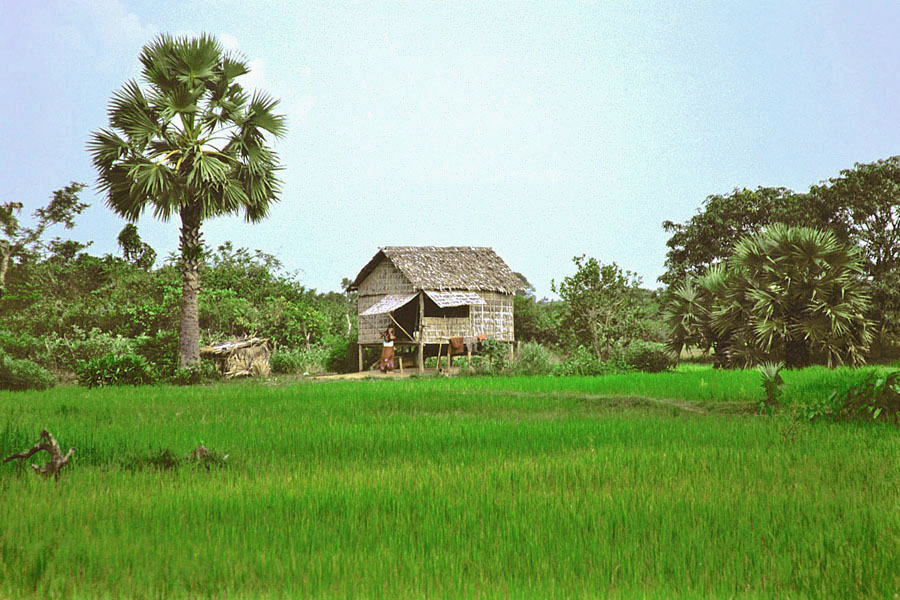 |
|
Most homes in rural Cambodia, by
necessity, are
built on stilts -
north of Siem Reap, Cambodia |
|
|
|
 |
|
Another rural Cambodian home
built on stilts -
north of Siem Reap, Cambodia |
|
|
|
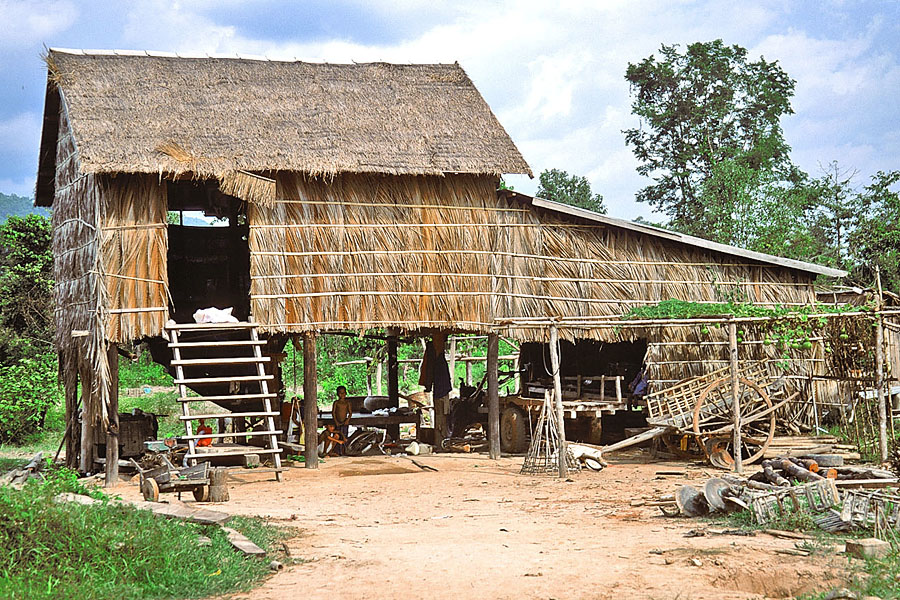 |
|
A thatch home with a primitive ox
cart parked in the driveway -
north of Siem Reap, Cambodia |
|
|
|
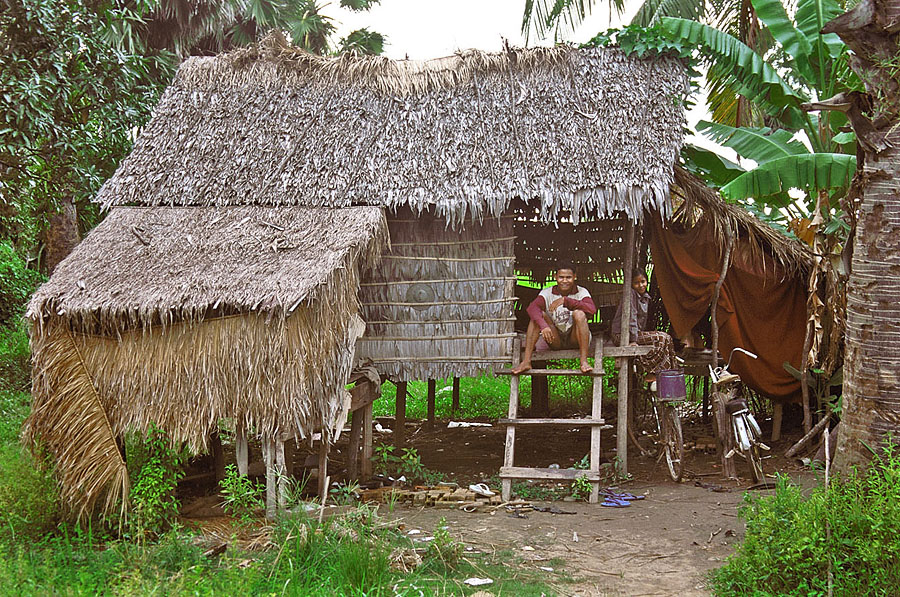 |
|
This modest home includes an
extra bedroom and garage -
north of Siem Reap, Cambodia |
|
|
|
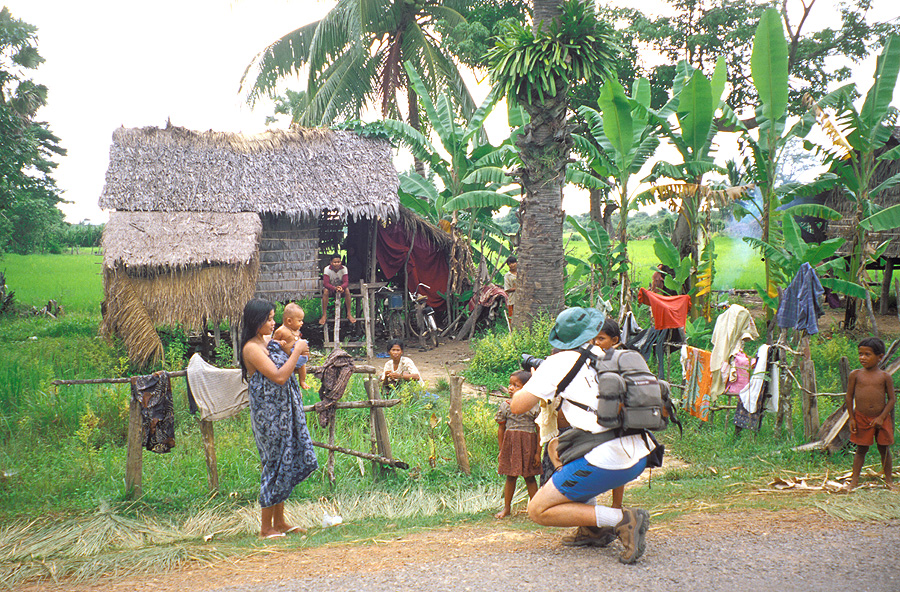 |
|
The Cambodians welcomed the
camera which is not always the case in other parts of the world -
north of Siem Reap, Cambodia |
|
|
|
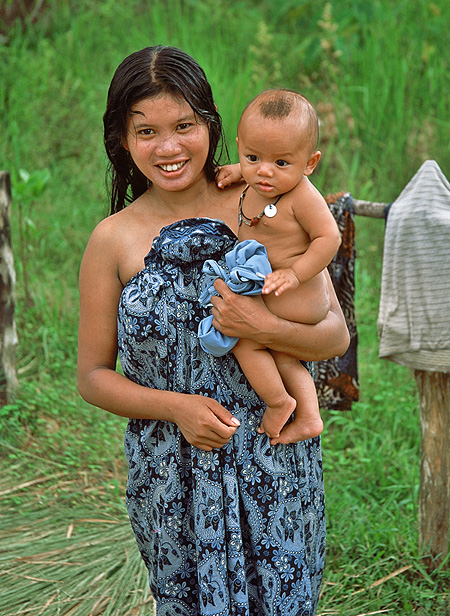 |
|
Although this mother and son are
dressed as though they just exited the shower,
Cambodia's heat and humidity often make you feel like you are in the sauna -
north of Siem Reap, Cambodia |
|
|
|
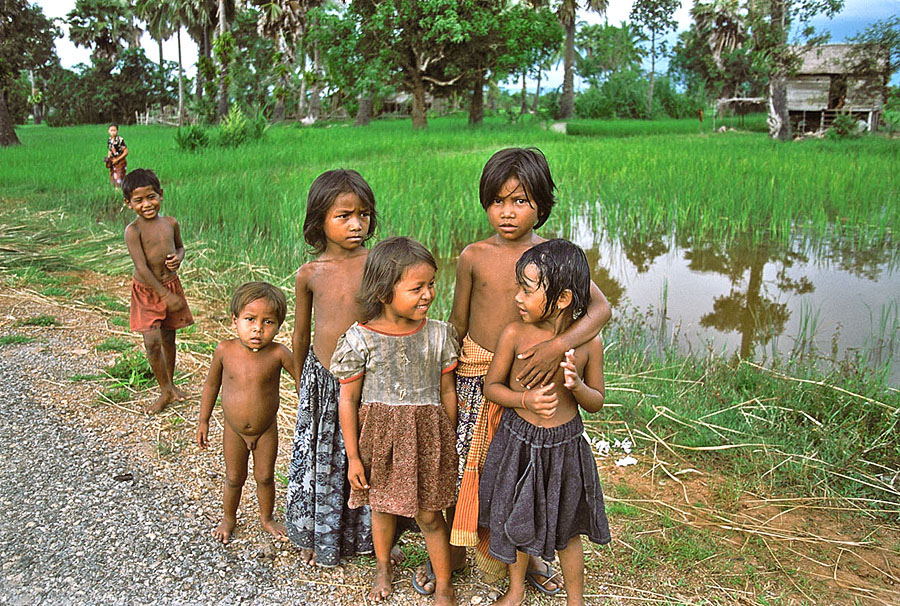 |
|
These children may be posing for
their very first picture -
north of Siem Reap, Cambodia |
|
|
|
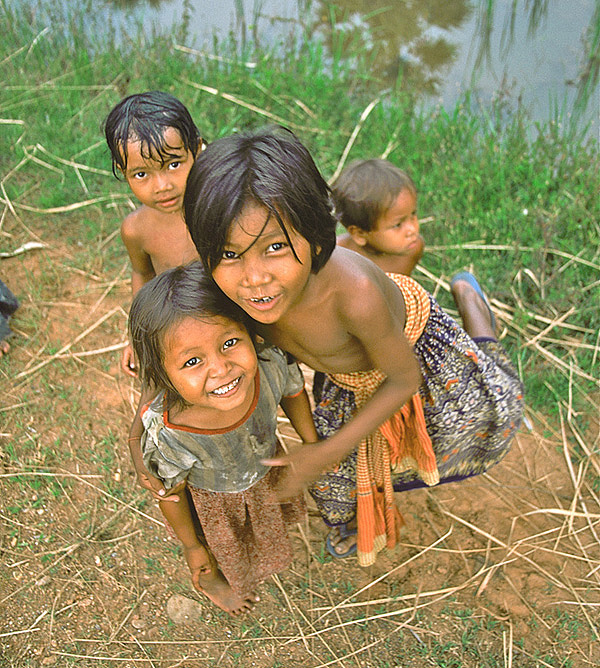 |
|
This picture points to everything
we love about children -
north of Siem Reap, Cambodia |
|
|
|
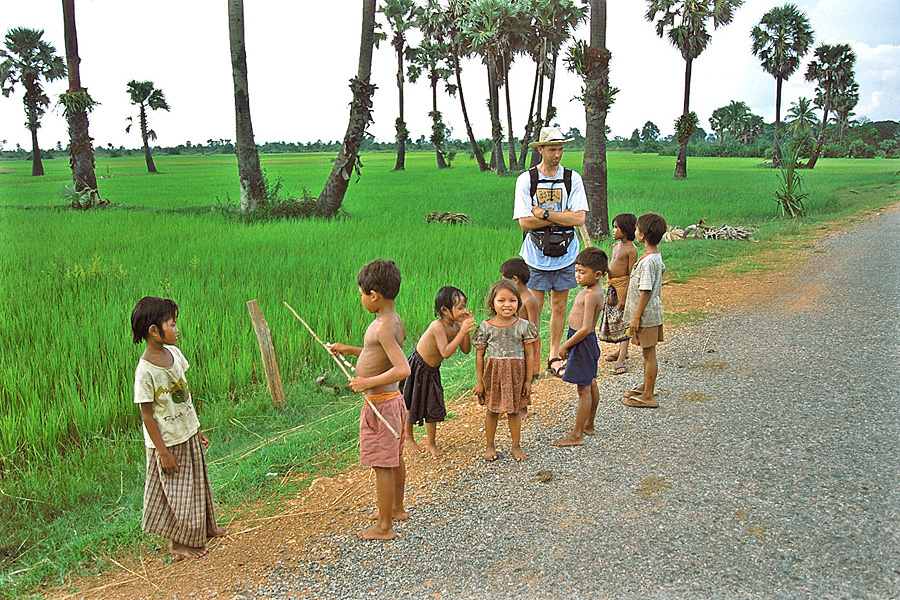 |
|
The lush, green rice paddies
stretch to the horizon -
north of Siem Reap, Cambodia |
|
|
|
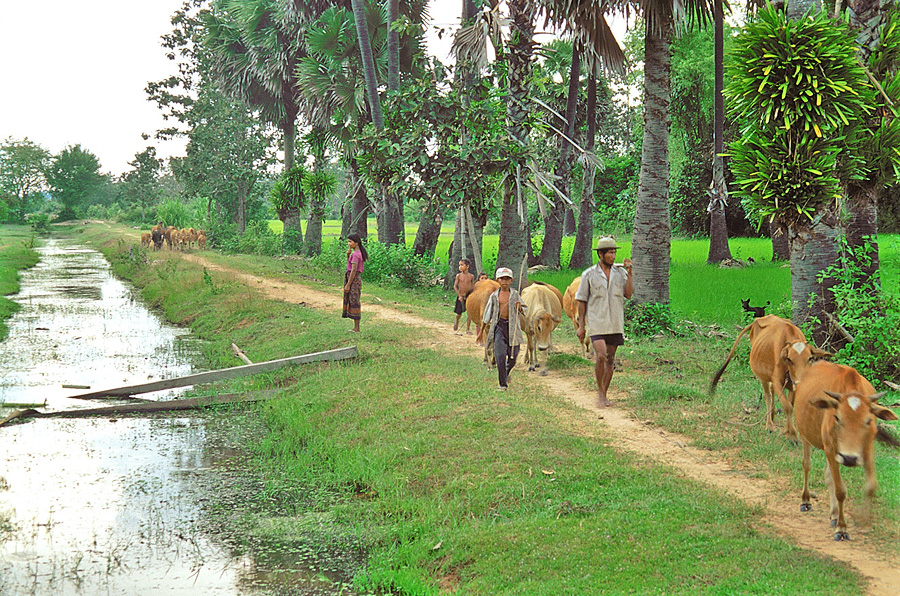 |
|
A picture of the simple life, but
is their lifestyle easy?
north of Siem Reap, Cambodia |
|
|
|
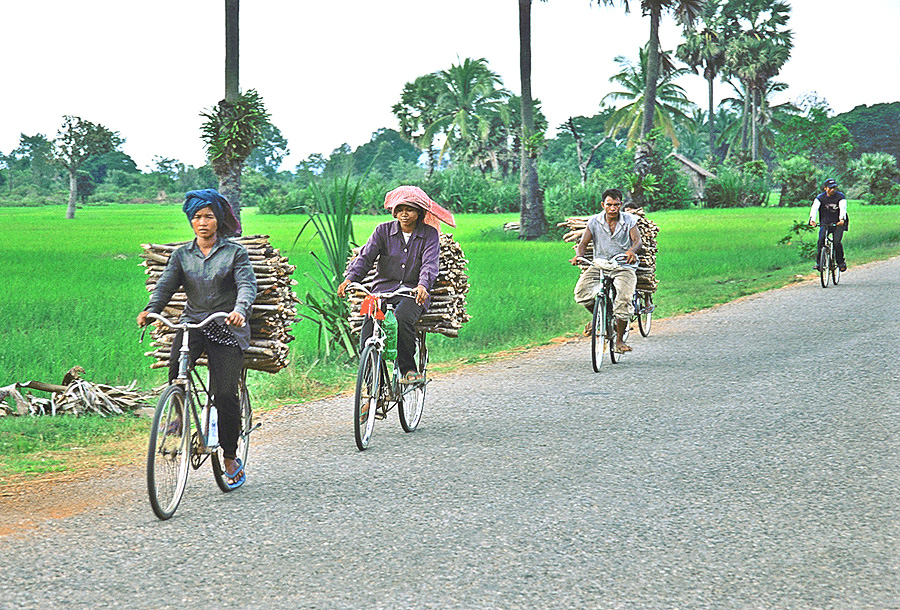 |
|
The bicycle is the most common
mode of transport in the countryside -
north of Siem Reap, Cambodia |
|
|
|
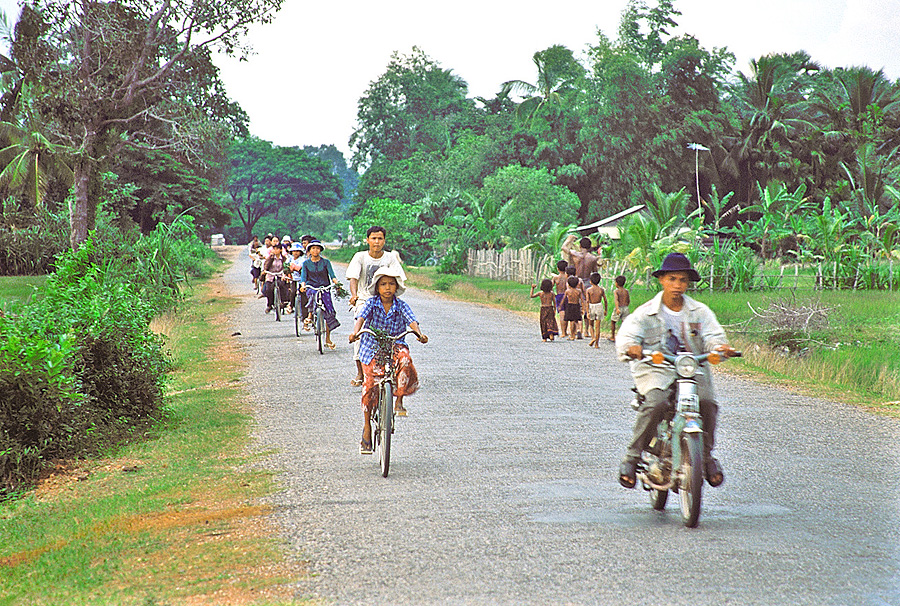 |
|
Afternoon, rush-hour traffic -
north of Siem Reap, Cambodia |
|
|
|
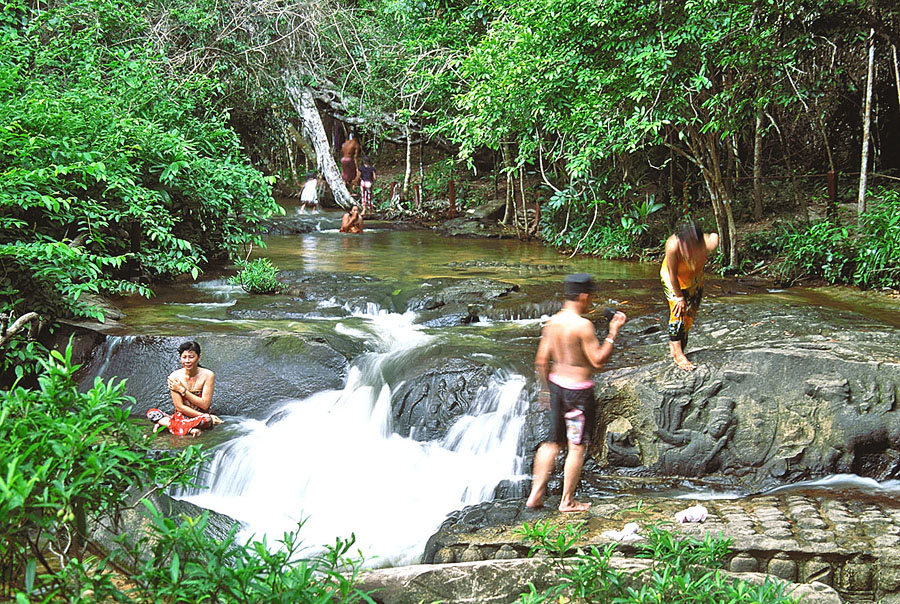 |
|
Commonly referred to as the "River of a Thousand Lingas," the bedrock of the
stream is adorned
with a plethora
of carvings and images of Hindu gods. Kobal Spien literally means
"the head of the river," and it was believed that
the carved lingas spiritually "fertilized" the waters feeding
the irrigated rice fields farther downstream -
Kobal Spien, Cambodia |
|
|
|
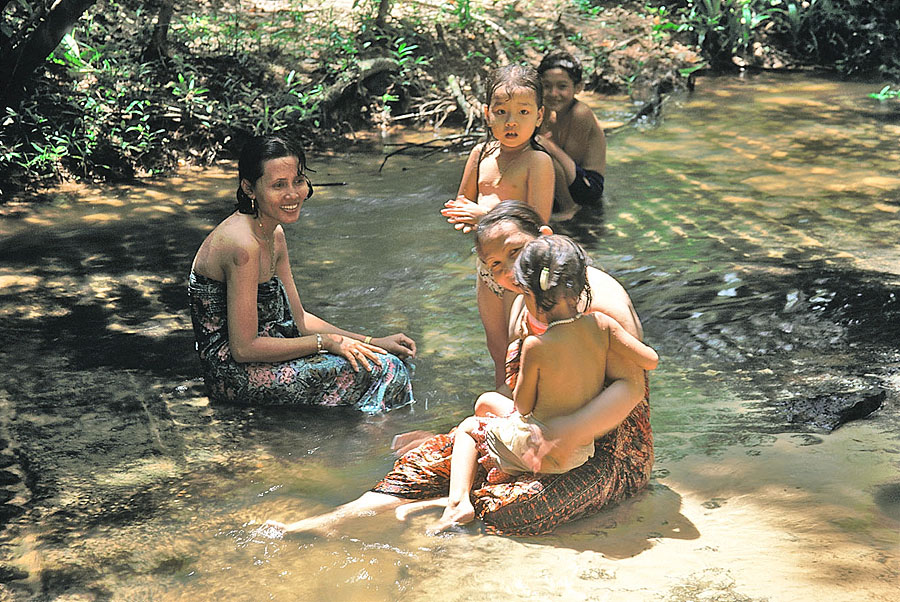 |
|
The cool, clear water provides
welcomed relief on a hot day. The riverbed is adorned with a multitude of
lingas (the circular carvings).
What is a linga? According to Webster's online dictionary, a linga is a
stylized phallic symbol that is worshipped
in Hinduism as a sign of generative power and that represents the god
Shiva -
Kobal Spien, Cambodia |
|
|
|
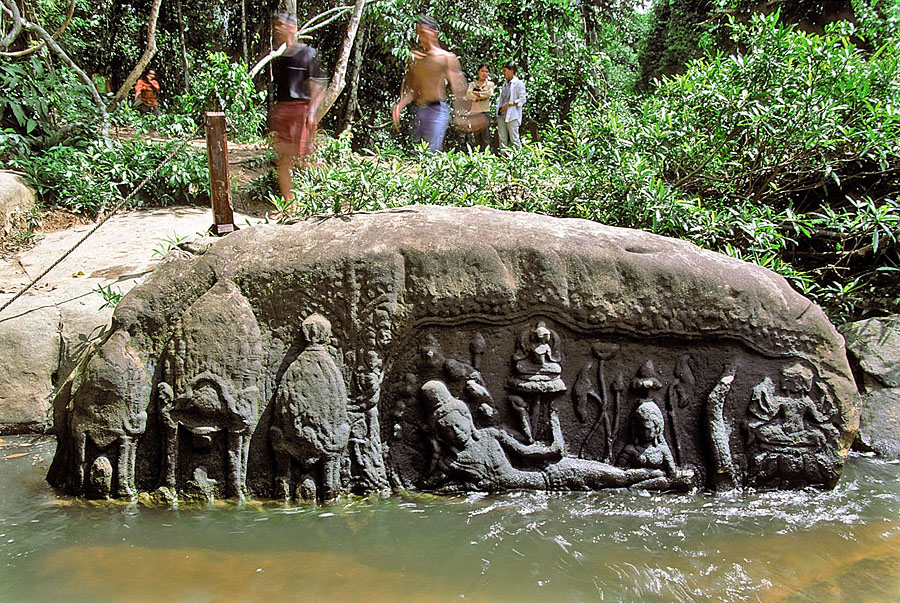 |
|
A boulder carved with images of
Hindu gods (including a reclining Buddha) -
Kobal Spien, Cambodia |
|
|
|
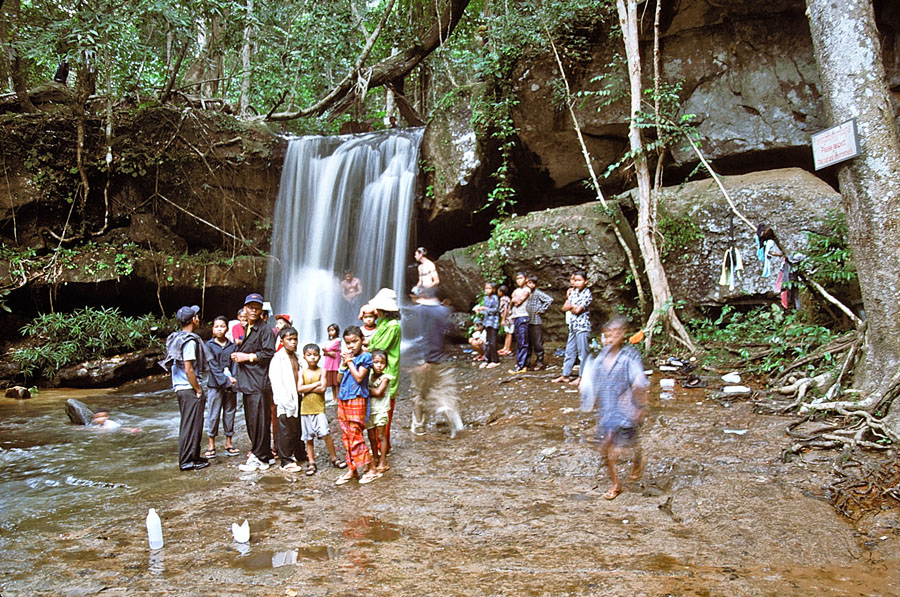 |
|
A very refreshing waterfall at
the end of the trail; although many tourists visit the area, everyone must
be cautious and stick to the
well-worn paths because of the unexploded landmines that remain
hidden just beneath the surface after decades of "civil" war -
Kobal Spien, Cambodia |
|
|
|
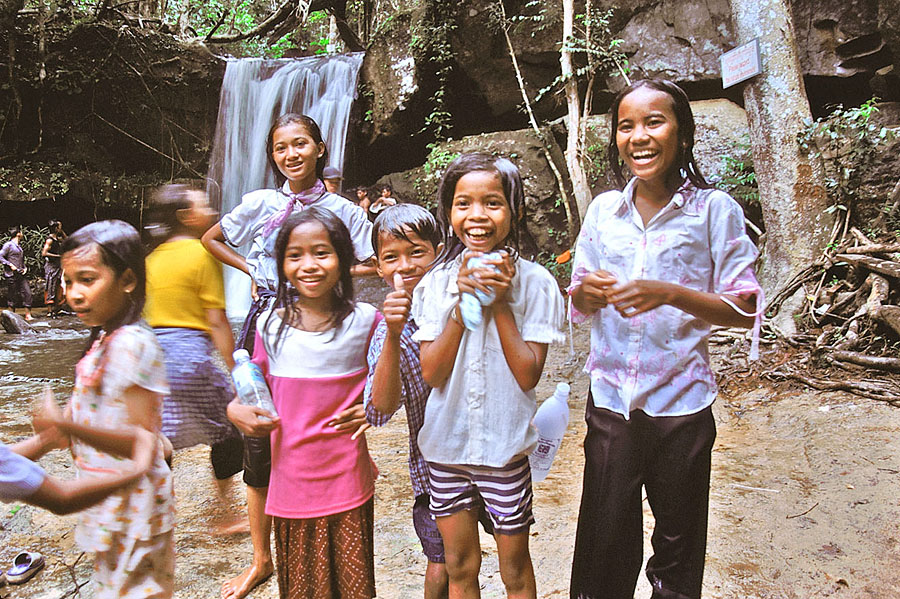 |
|
Cambodian children having a good
time in front of the camera -
Kobal Spien, Cambodia |
|
|
|
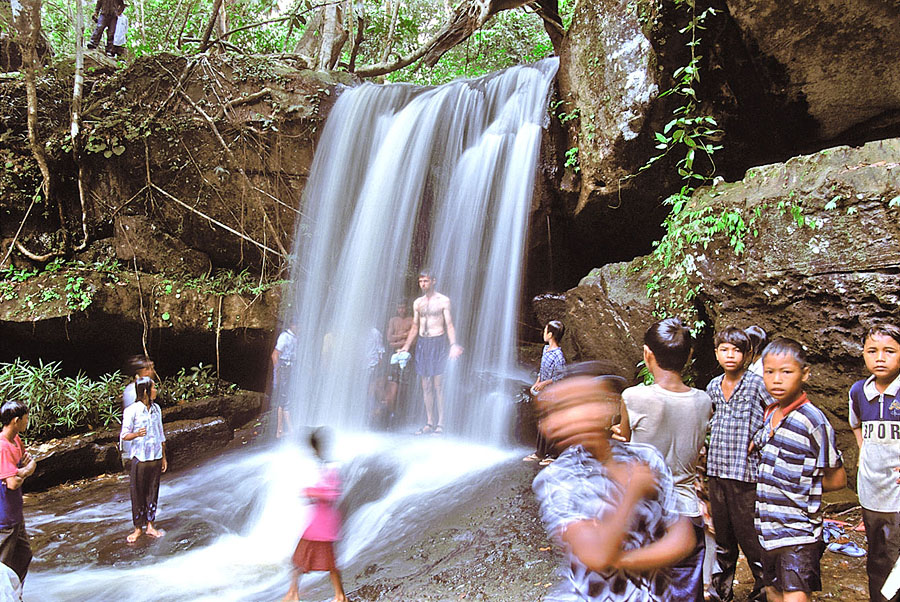 |
|
Unlike many other southeast Asian
cultures, some aspects of the Cambodian
culture are surprisingly conservative. When I asked my guide
why most of
the boys did not remove their shirt before entering the water, he replied
with his twangy accent,
"Because they shy" -
Kobal Spien, Cambodia |
|
|
|
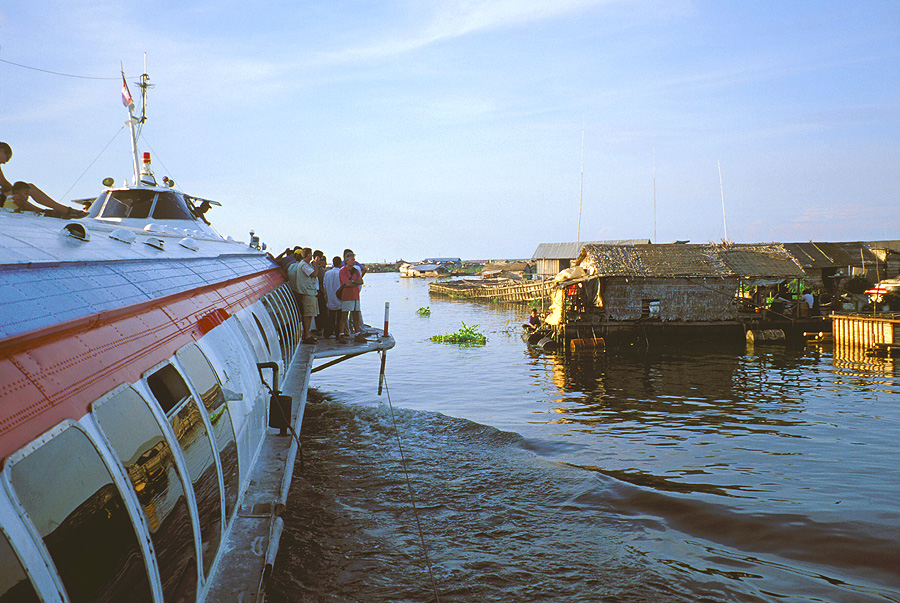 |
|
From just south of Siem Reap, the hydrofoil travels
across the
Tonle Sap Lake and along the Tonle Sap River to Phnom Penh.
Travel by boat
is not only faster but also more comfortable due to the country's
neglected and pot-holed roads -
Tonle Sap Lake, Cambodia |
|
|
|
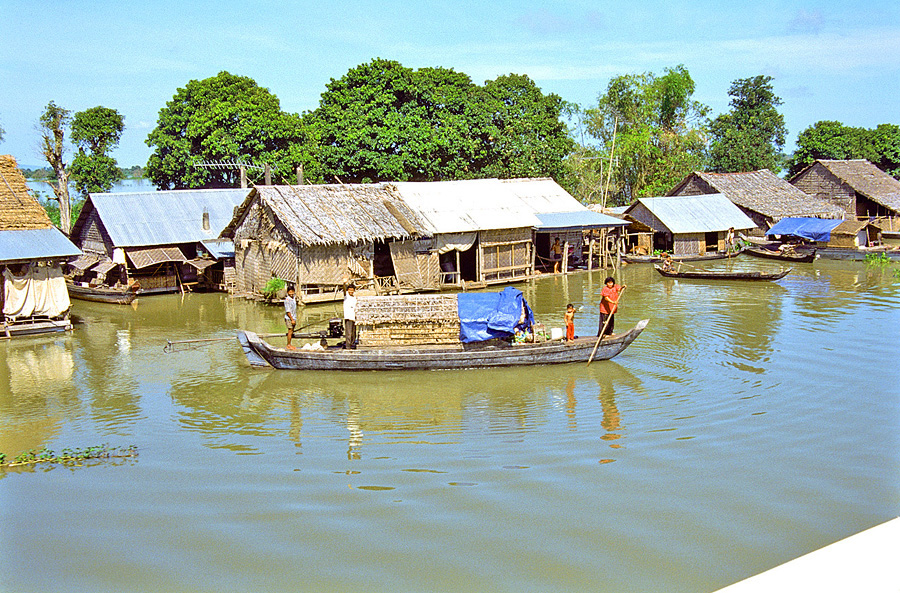 |
|
Travel by boat also allows
visitors to glimpse into the watery lifestyle of many Cambodians -
Tonle Sap Lake, Cambodia |
|
|
|
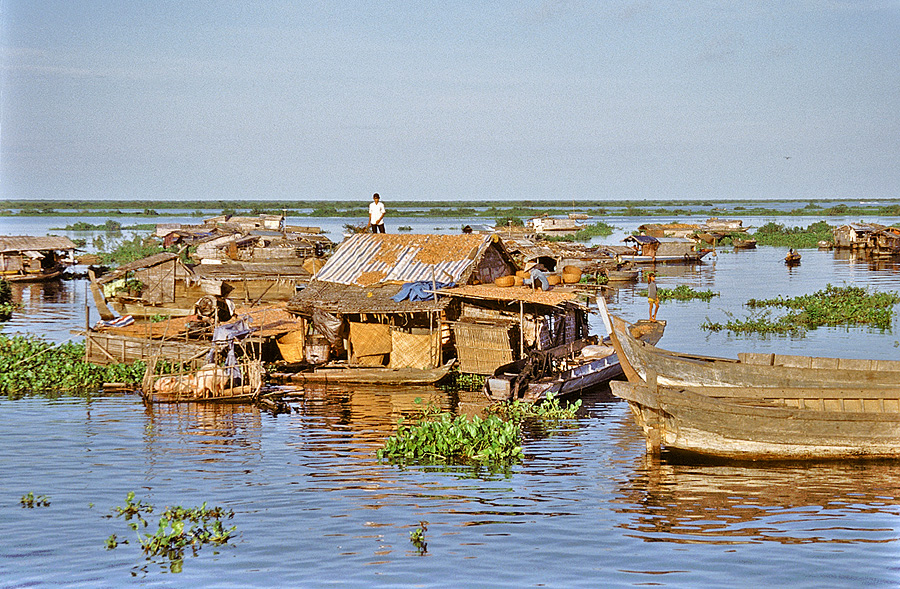 |
|
Many Cambodians live the majority
and perhaps the entirety of their lives floating on the water -
Tonle Sap Lake, Cambodia |
|
|
|
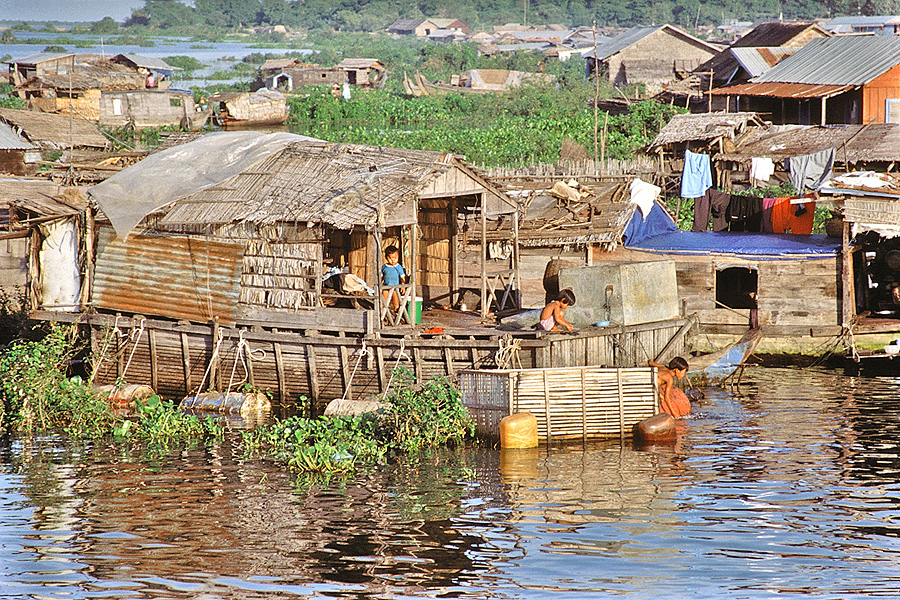 |
|
Not much room for these children
to run -
Tonle Sap Lake, Cambodia |
|
|
|
 |
|
You can leave home only by boat -
Tonle Sap Lake, Cambodia |
|
|
|
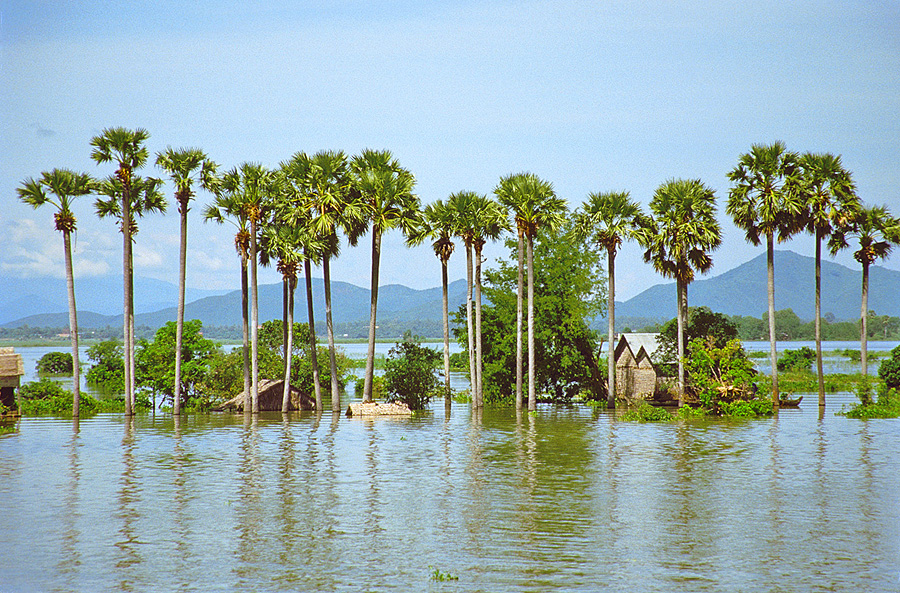 |
|
Although the Tonle Sap Lake is quite
shallow, it has a seasonal variation of more than 20 feet. The lake
reaches its maximum level
when the seasonal floodwaters of the Mekong River reverse the flow of the
Tonle Sap River and flood the lake -
Tonle Sap Lake, Cambodia |
|
|
|
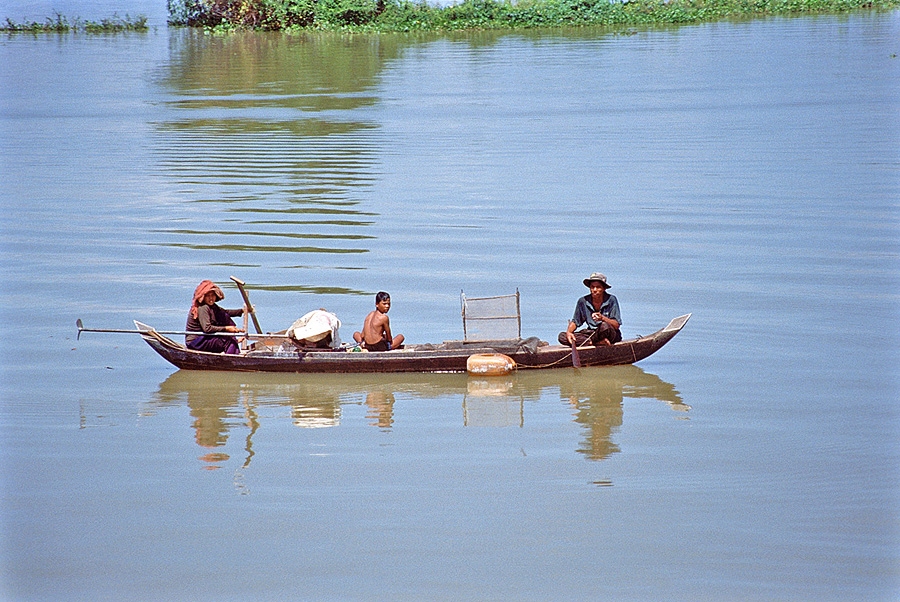 |
|
The pulsing nature of the lake in
combination with a large floodplain creates a vibrant breeding ground for
fish;
this rich ecosystem is one of the world's most productive inland fisheries
and supports more than 3 million Cambodians -
Tonle Sap Lake, Cambodia |
|
|
|
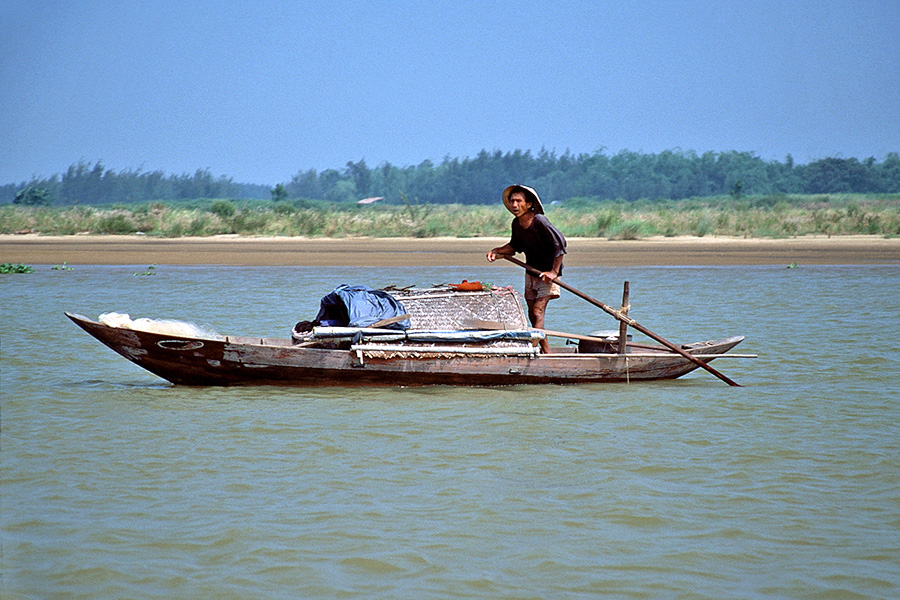 |
|
I would guess that the resume of
most folks in the area has some mention of "fishing" -
Tonle Sap River, Cambodia |
|
|
|
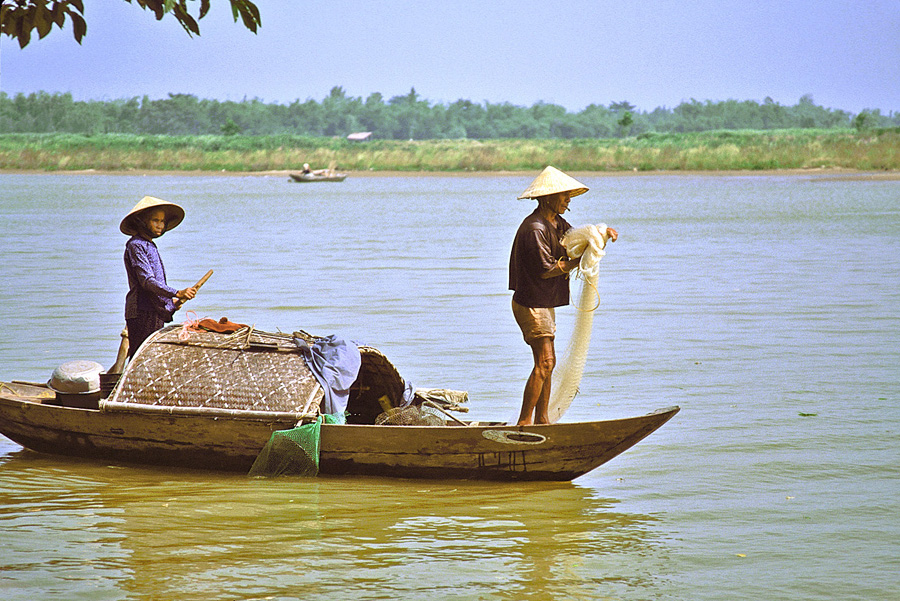 |
|
This fisherman, even while
smoking, is just about to
cast his net -
Tonle Sap River, Cambodia |
|
|
|
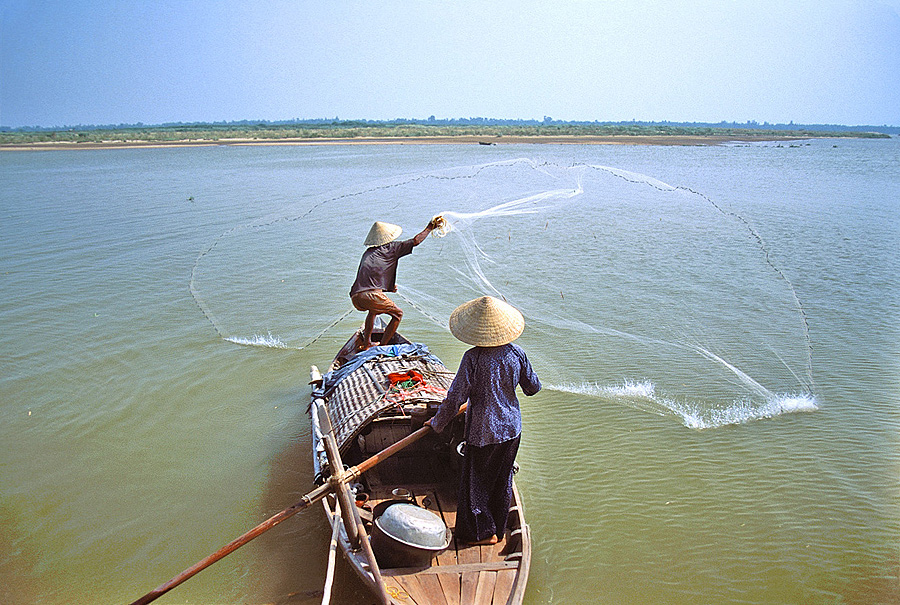 |
|
A wonderful action photo of a
skillful cast -
Tonle Sap River, Cambodia |
|
|
|
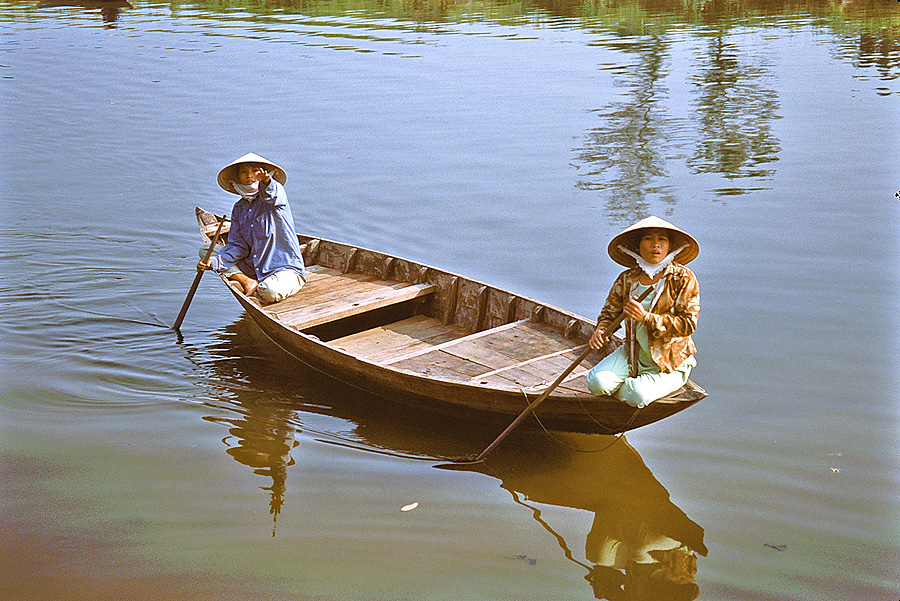 |
|
I think these ladies are
expecting some sort of compensation for this photo - good thing we are
traveling on a hydrofoil! -
Tonle Sap River, Cambodia |
|
|
|
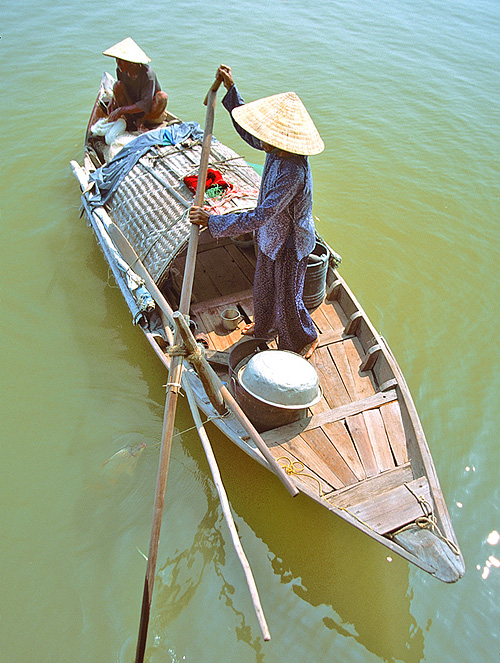 |
|
Another fishing vessel with a tethered
fish -
Tonle Sap River, Cambodia |
|
|
|
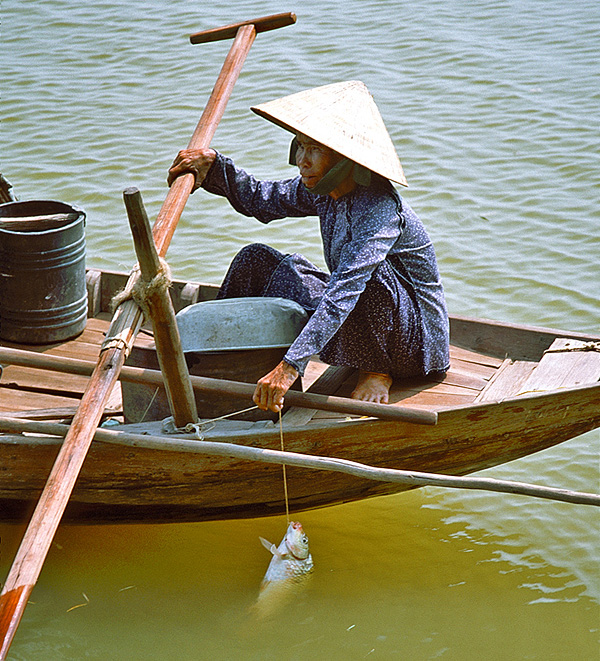 |
|
The Tonle Sap provides more than
75% of Cambodia's inland fish catch as well as 60% of its protein intake -
Tonle Sap River, Cambodia |
|
|
|
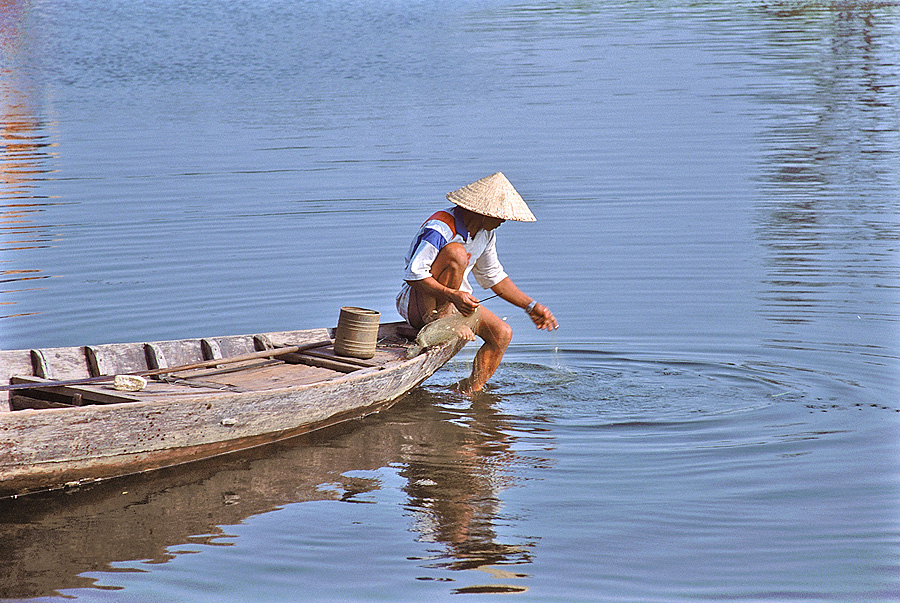 |
|
This fisherman is patiently
working with a very delicate net -
Tonle Sap River, Cambodia |
|
|
|
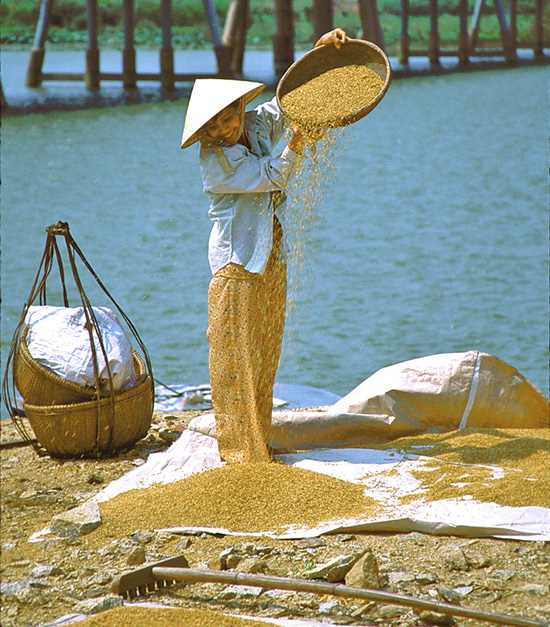 |
|
This young lady is winnowing the rice
by utilizing the wind to separate the inedible chaff (covering) from the
seed -
Tonle Sap River, Cambodia |
|
|
|
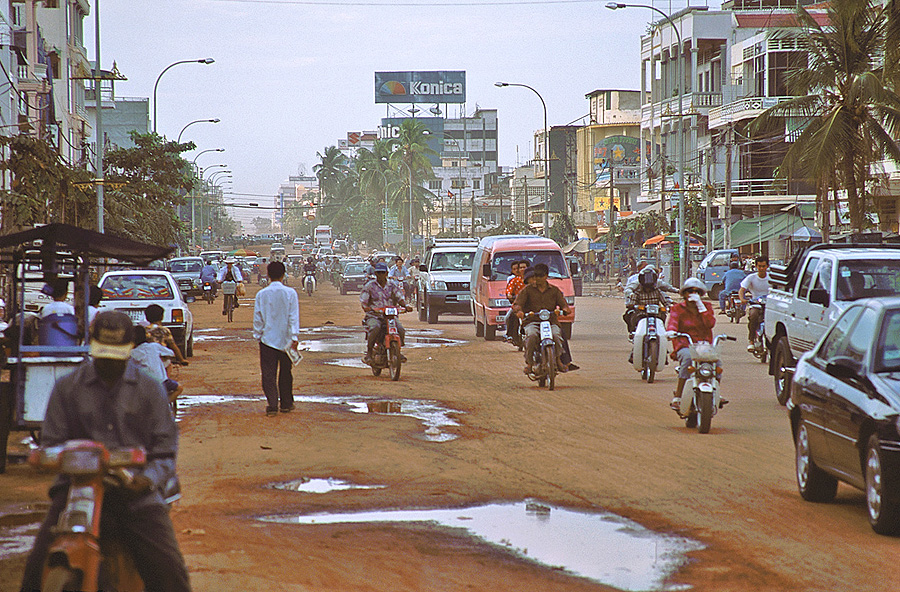 |
|
Many of the capital's streets are
in poor condition and become horribly muddy during rain -
Phnom Penh, Cambodia |
|
|
|
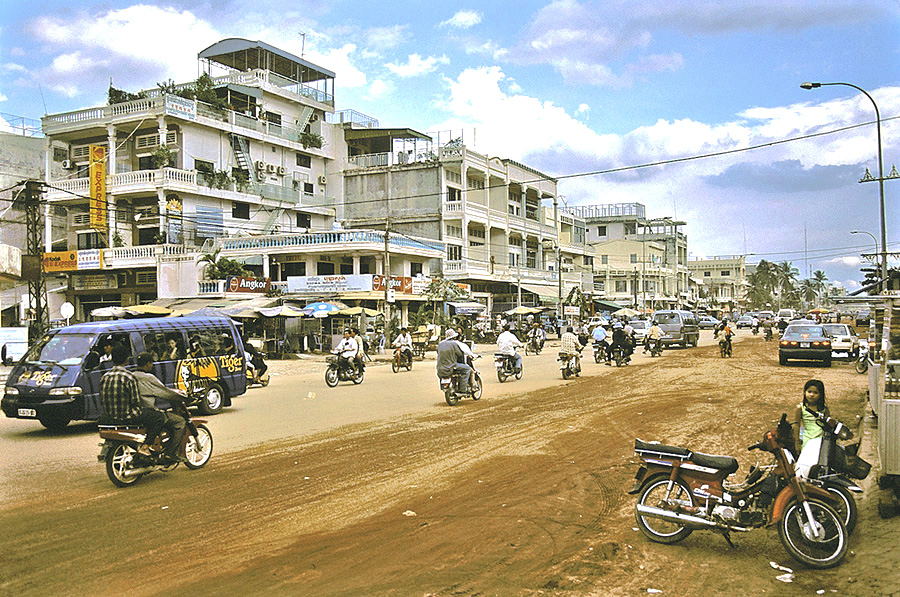 |
|
The mud is carried onto the paved
streets from the many unpaved and potholed streets in the city -
Phnom Penh, Cambodia |
|
|
|
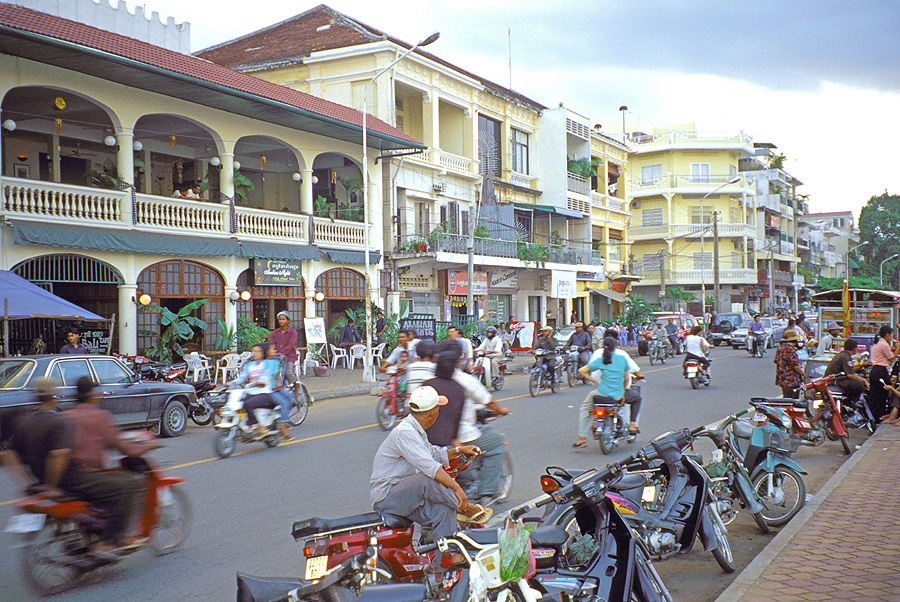 |
|
The city center still reveals a
hint of its former charm -
Phnom Penh, Cambodia |
|
|
|
 |
|
The French-influenced architecture reveals
Cambodia's colonial history -
Phnom Penh, Cambodia |
|
|
|
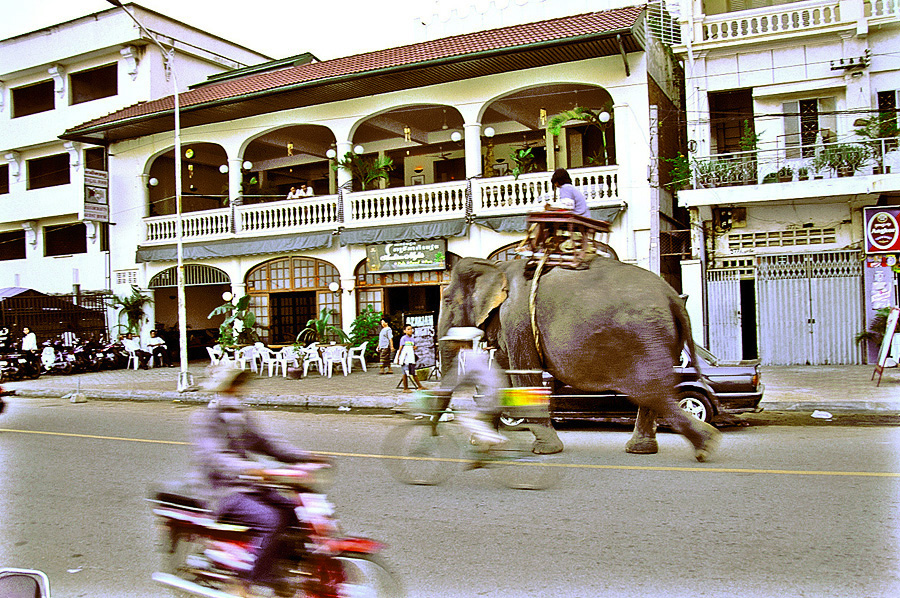 |
|
The Cambodians utilize a WIDE variety of
transport to negotiate the rough roads! -
Phnom Penh, Cambodia |
|
|
|
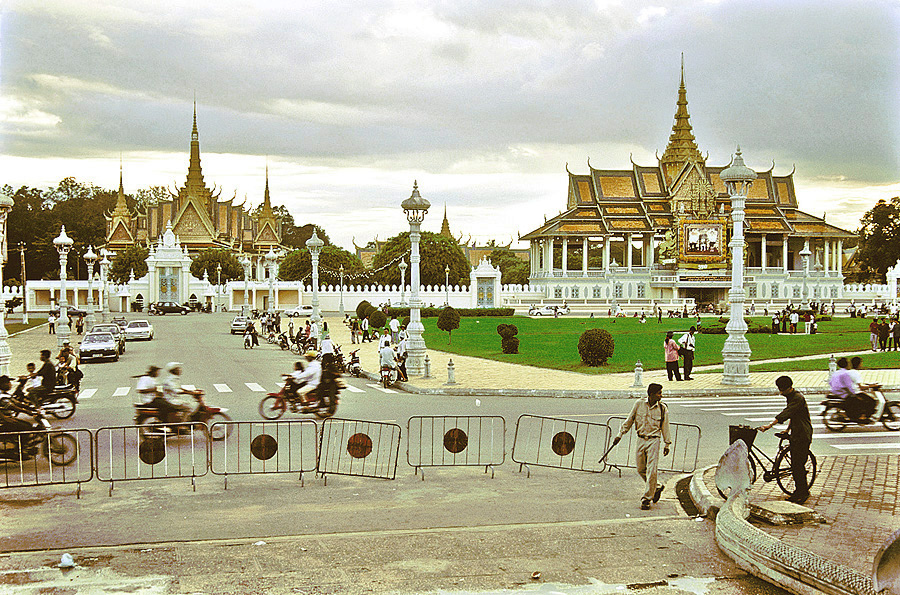 |
|
The Royal Palace as viewed at
dusk -
Phnom Penh, Cambodia |
|
|
|
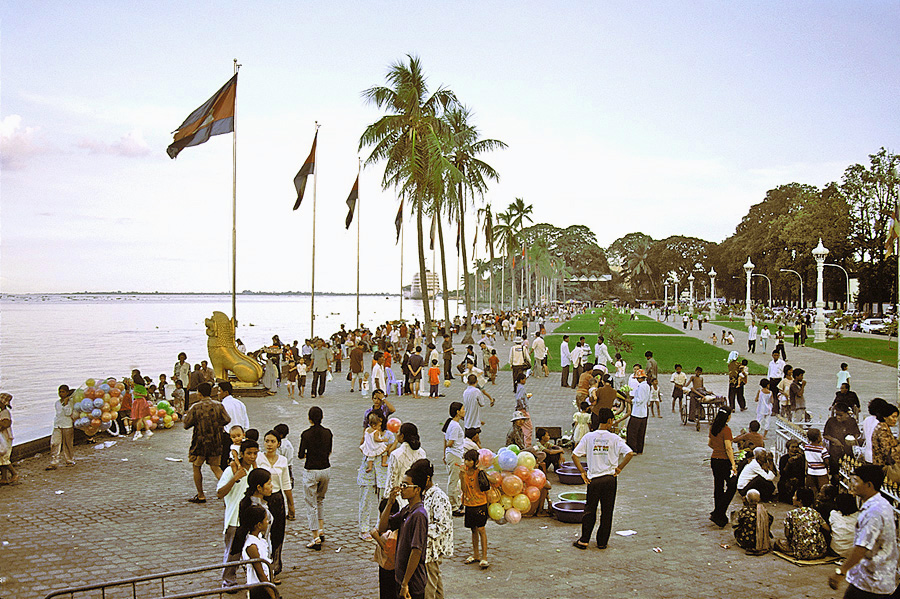 |
|
A festive gathering at sundown along the Tonle Sap
River -
Phnom Penh, Cambodia |
|
|
|
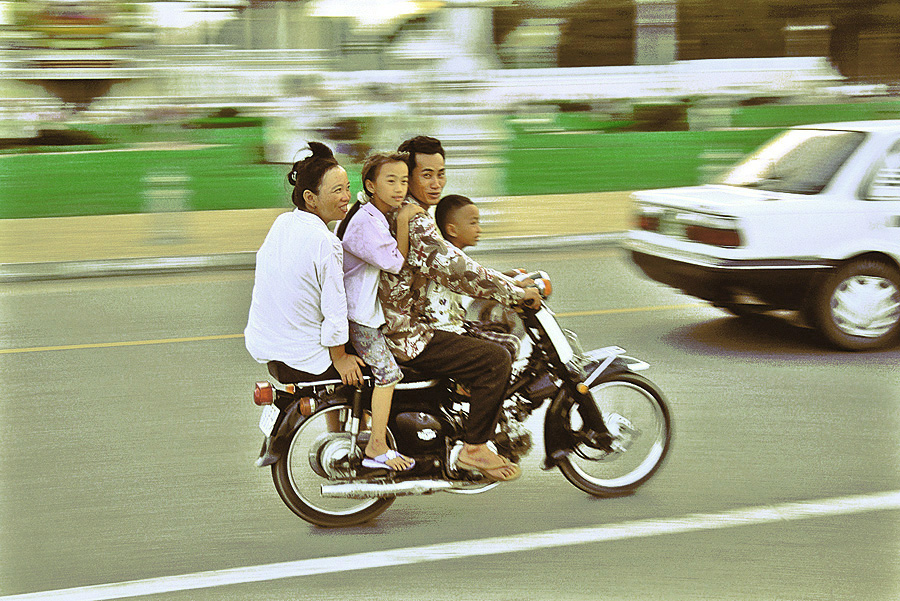 |
|
The motorbike is often the family
sedan in Cambodia -
Phnom Penh, Cambodia |
|
|
|
 |
|
The families have many different
passenger schemes -
Phnom Penh, Cambodia |
|
|
|
 |
|
My favorite scheme -
Phnom Penh, Cambodia |
|
|
|
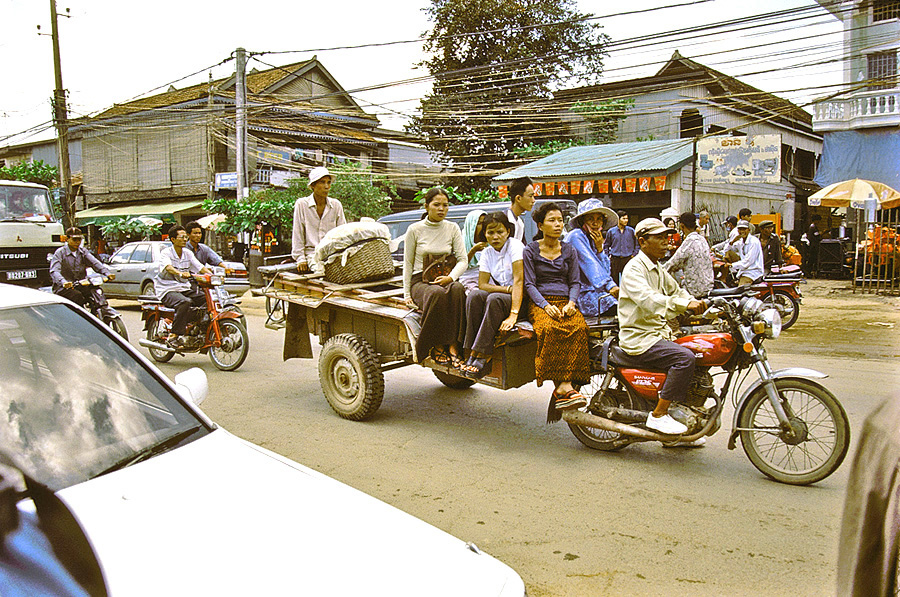 |
|
You have to admire the ingenuity
often "developed" in the developing world -
Phnom Penh, Cambodia |
|
|
|
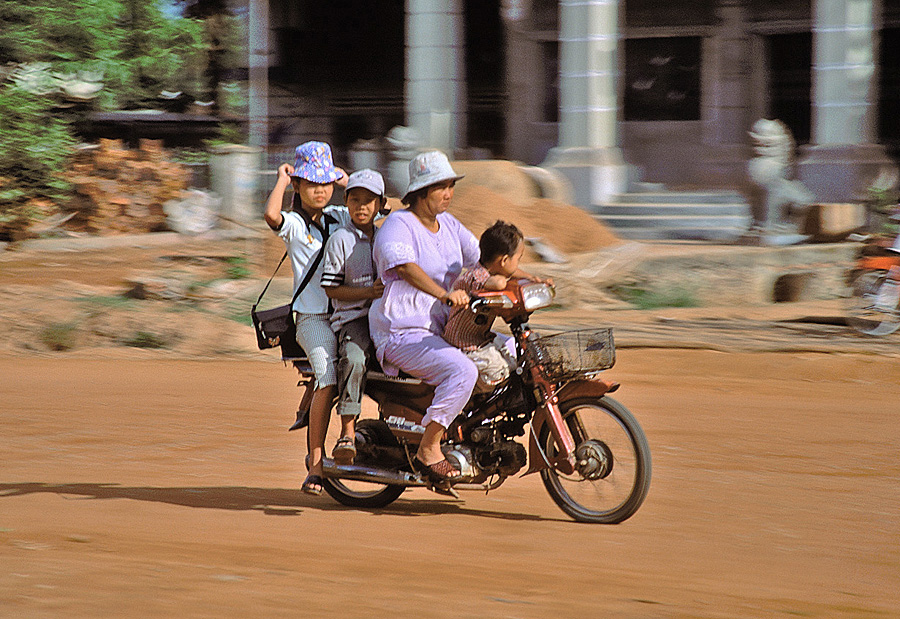 |
|
Mom is taking the family out for
a spin -
Phnom Penh, Cambodia |
|
|
|
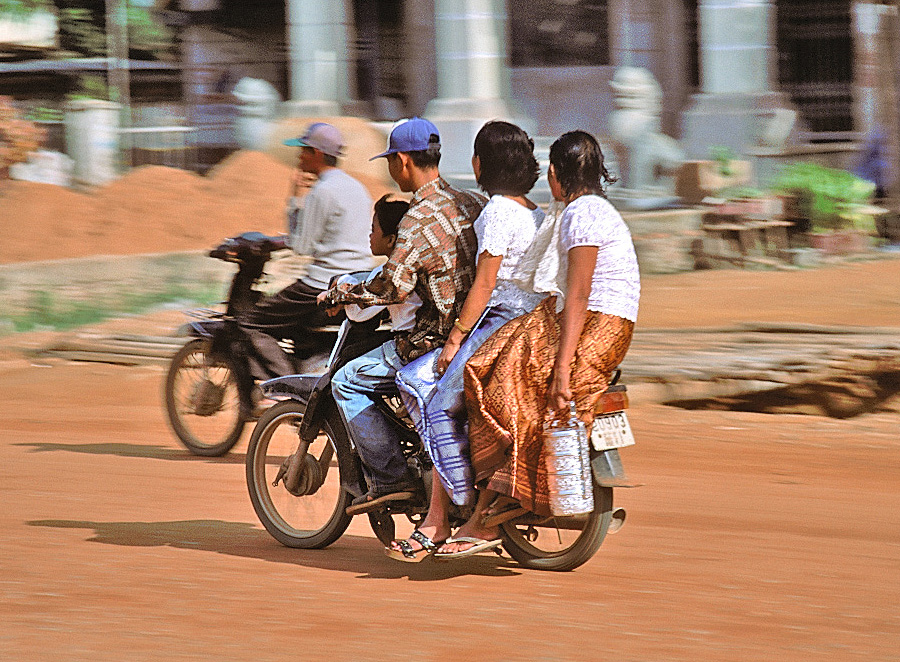 |
|
The twin, side-saddle scheme -
Phnom Penh, Cambodia |
|
|
|
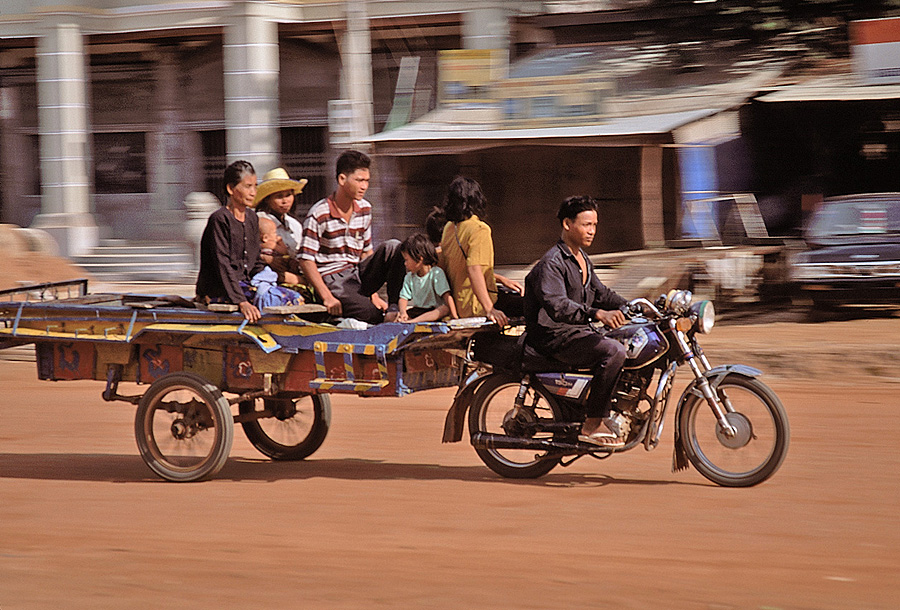 |
|
Room for at about 50 more passengers -
Phnom Penh, Cambodia |
|
|
|
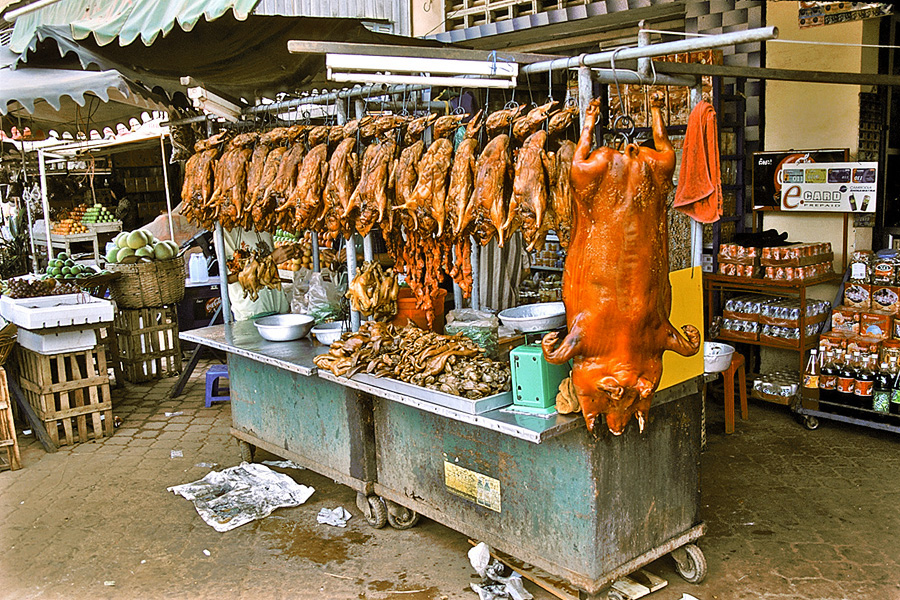 |
|
For some reason, travelers often
adopt a vegetarian diet when traveling in the developing world -
Phnom Penh, Cambodia |
|
|
|
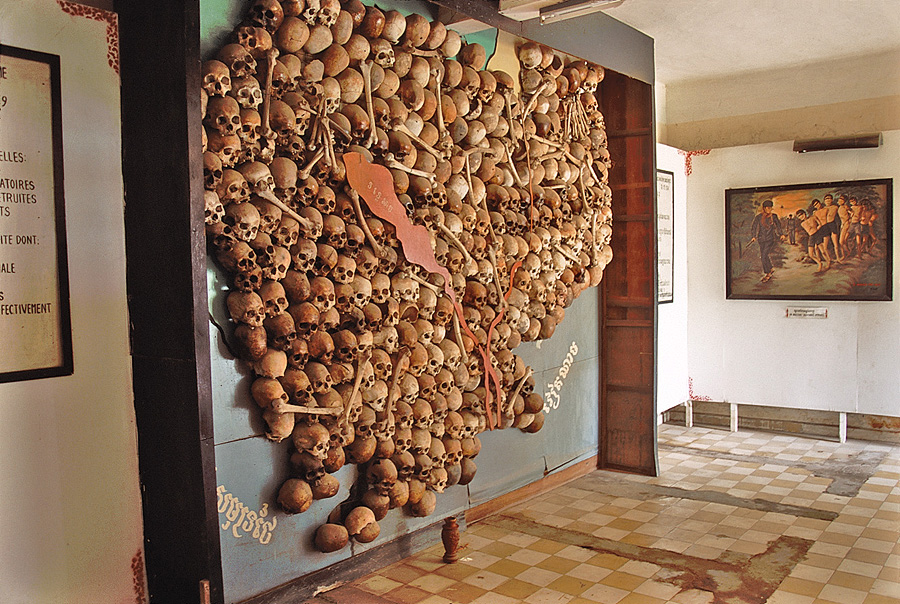 |
|
The Tuol Sleng Museum is a
haunting testament to the crimes of the Khmer Rouge. This building, at one
time an ordinary high school,
was taken over in 1975 by Pol Pot's security forces and converted
into a prison and interrogation center. More than 17,000 people
were interrogated and tortured here before being sent to the Choeung Ek
Extermination Camp where they were murdered -
Tuol Sleng Genocide Museum; Phnom Penh,
Cambodia |
|
|
|
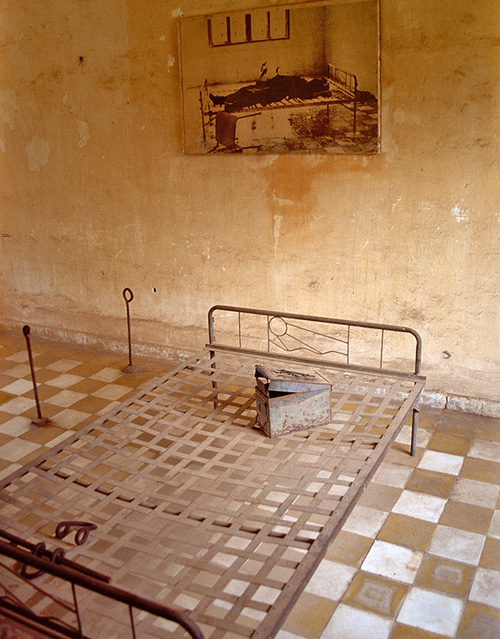 |
|
The high school classrooms were converted
into tiny prison cells and torture chambers, and all windows were covered
with iron bars and barbed wire to prevent escape. The vast majority of
prisoners, accused of betraying the party
or the revolution, were innocent of the charges against them and their confessions were produced by torture -
Tuol Sleng Genocide Museum; Phnom Penh,
Cambodia |
|
|
|
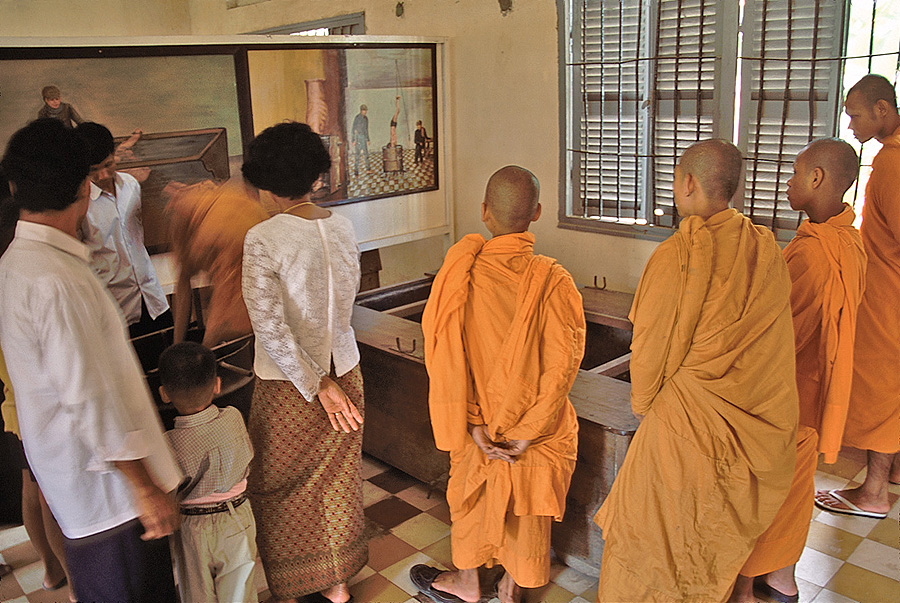 |
|
The victims who did not survive
the torture at Tuol Sleng were buried in mass graves on the grounds.
Out of the 17,000 prisoners who entered Tuol Sleng, there were only twelve
known survivors -
Tuol Sleng Genocide Museum; Phnom Penh,
Cambodia |
|
|
|
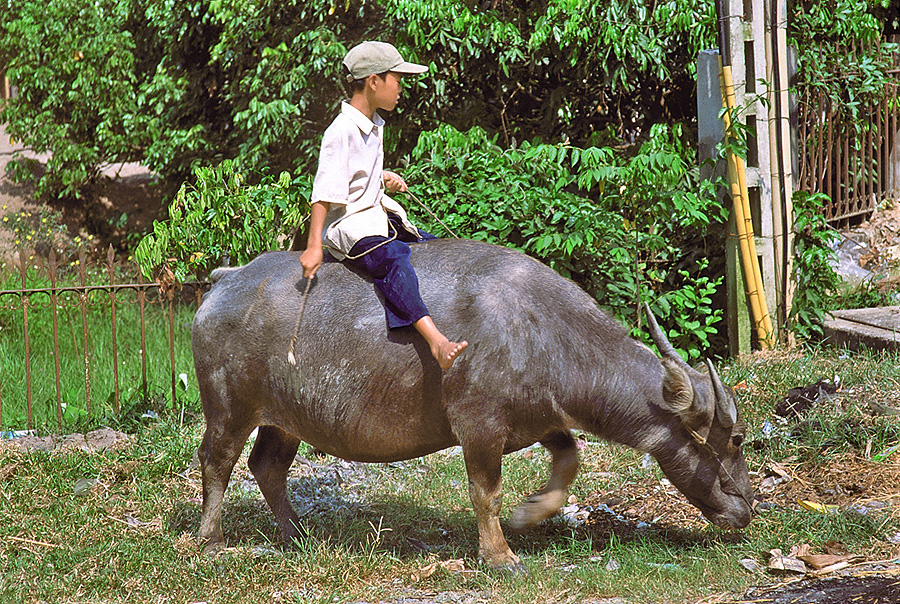 |
|
This water buffalo is feasting on
the lush grass amid the profuse litter that is common in the urban areas of
developing countries -
near Phnom Penh, Cambodia |
|
|
|
 |
|
The water buffalo provides
transportation, a vital source of protein, and landscaping services -
near Phnom Penh, Cambodia |
|
|
|
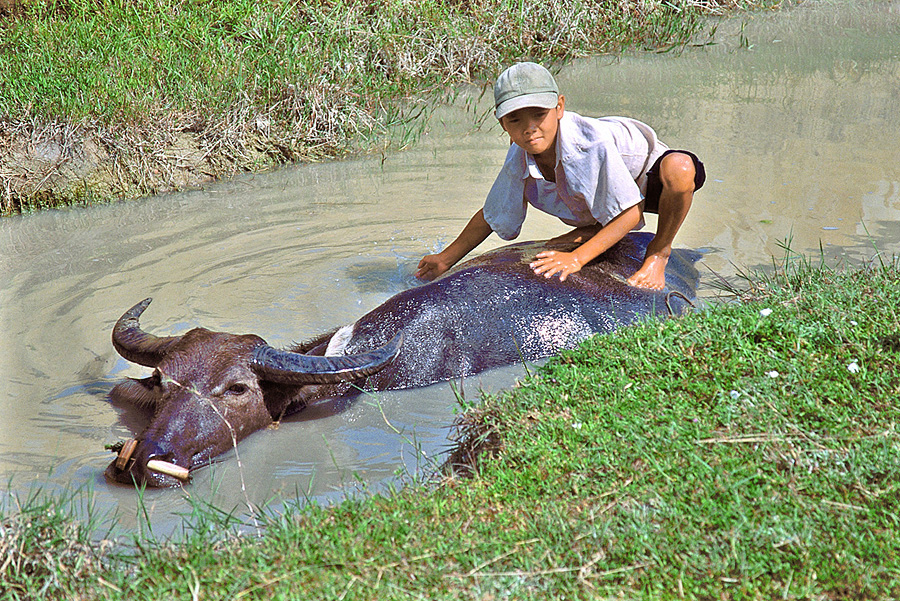 |
|
This water buffalo is getting a
bath -
near Phnom Penh, Cambodia |
|
|
|
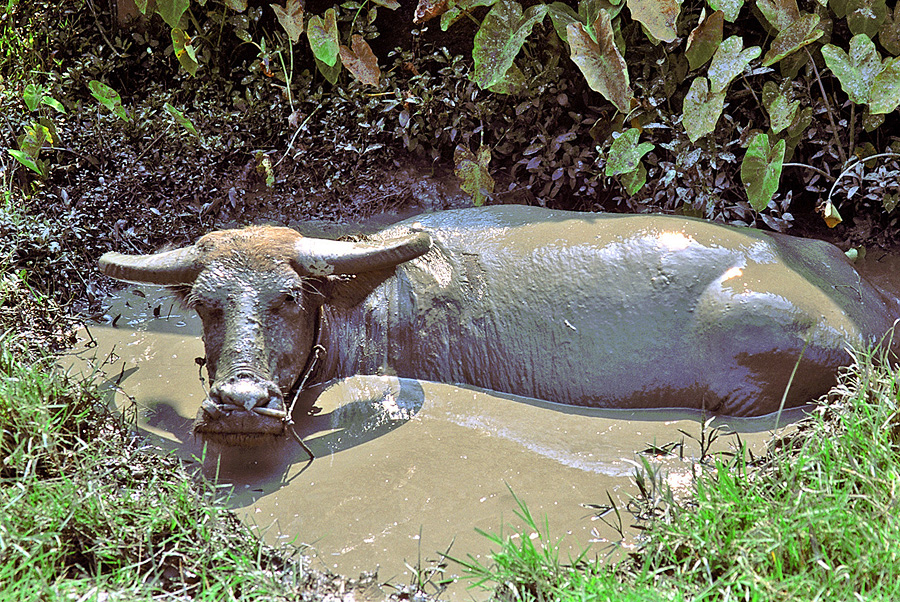 |
|
However, when left to their own
devices, this is the type of bath you can expect a water buffalo to partake
in -
near Phnom Penh, Cambodia |
|
|
|
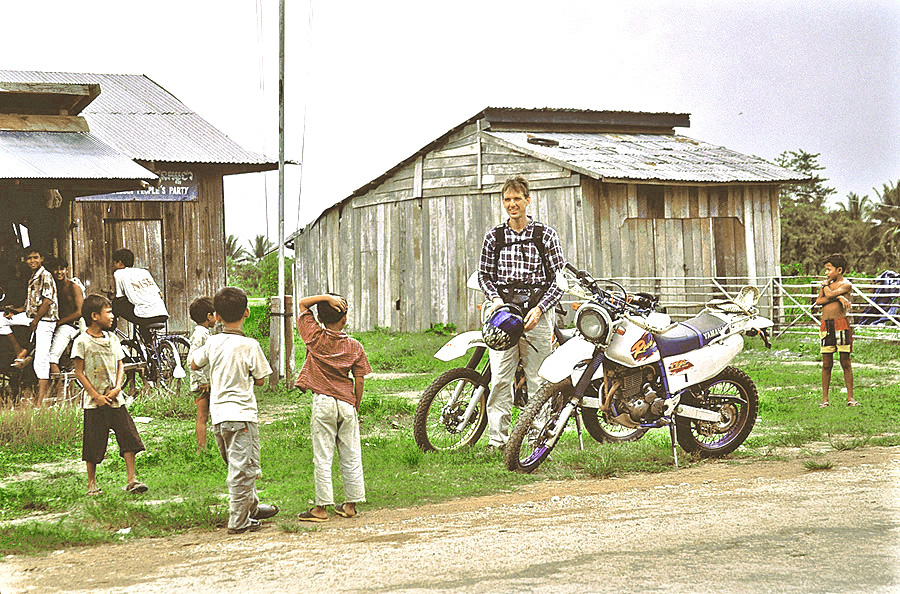 |
|
The rural Cambodian children were
fascinated by our off-road bikes that were much larger than those
typically seen in the countryside -
Kampot Province, Cambodia |
|
|
|
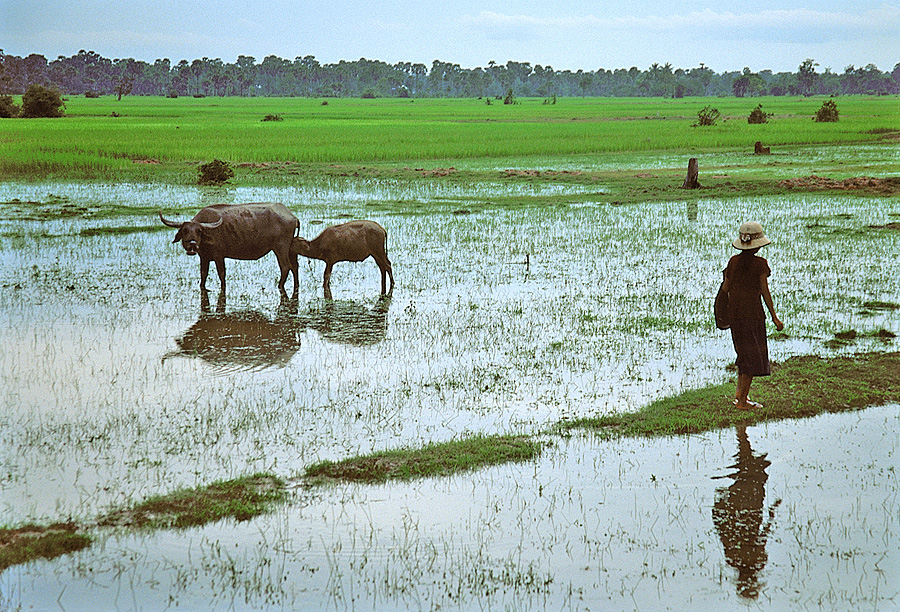 |
|
All-weather sandals are
functional in this landscape -
Kampot Province, Cambodia |
|
|
|
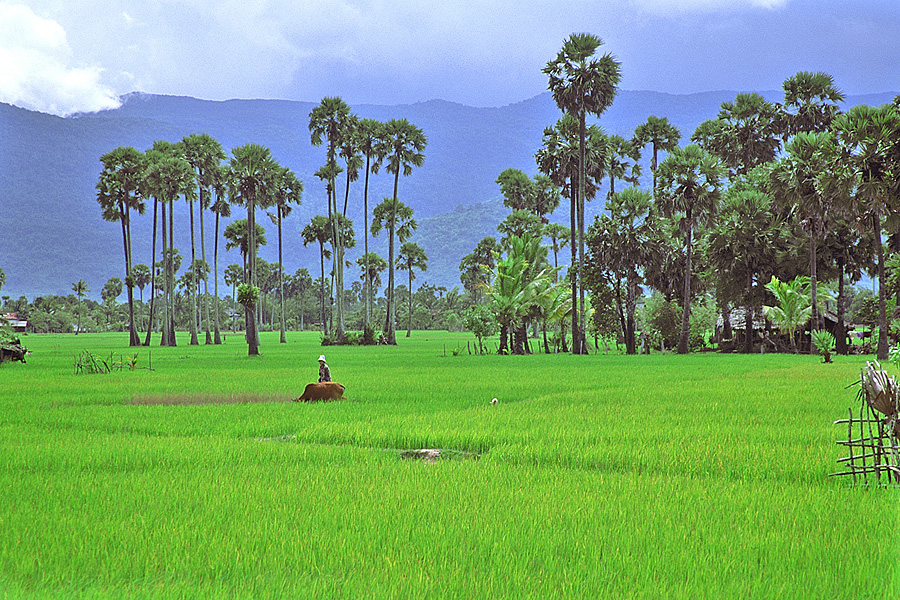 |
|
Southern Cambodia is an area of
lush rice paddies and forested mountains -
Kampot Province, Cambodia |
|
|
|
 |
|
The landscape exudes tranquility -
Kampot Province, Cambodia |
|
|
|
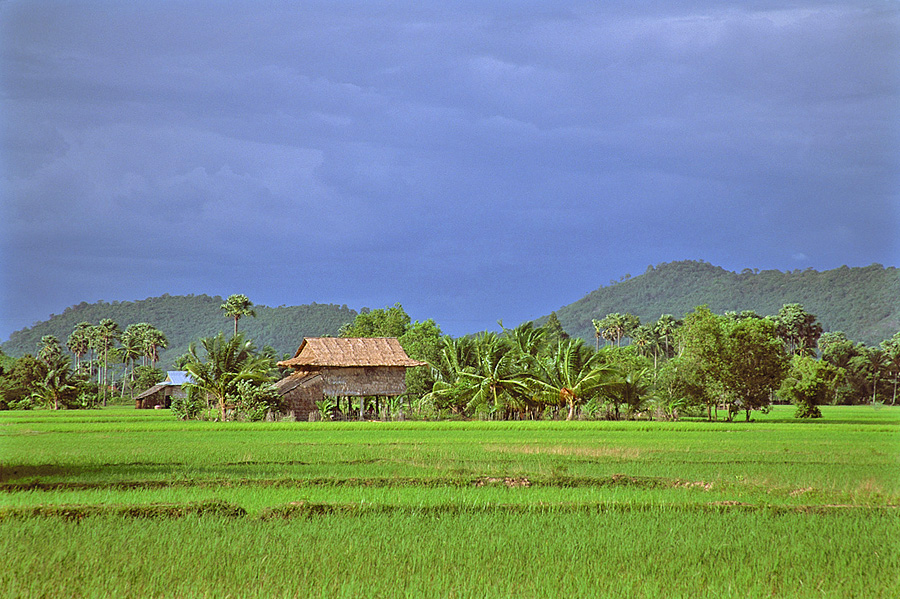 |
|
Except, perhaps, when an afternoon storm looms in the
distance -
Kampot Province, Cambodia |
|
|
|
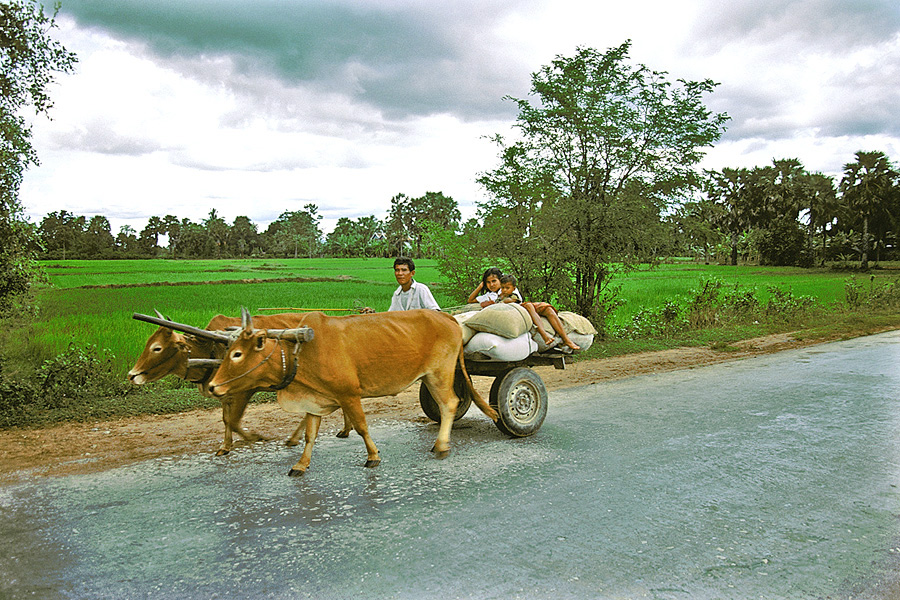 |
|
The ox cart is still commonplace
in the countryside -
Kampot Province, Cambodia |
|
|
|
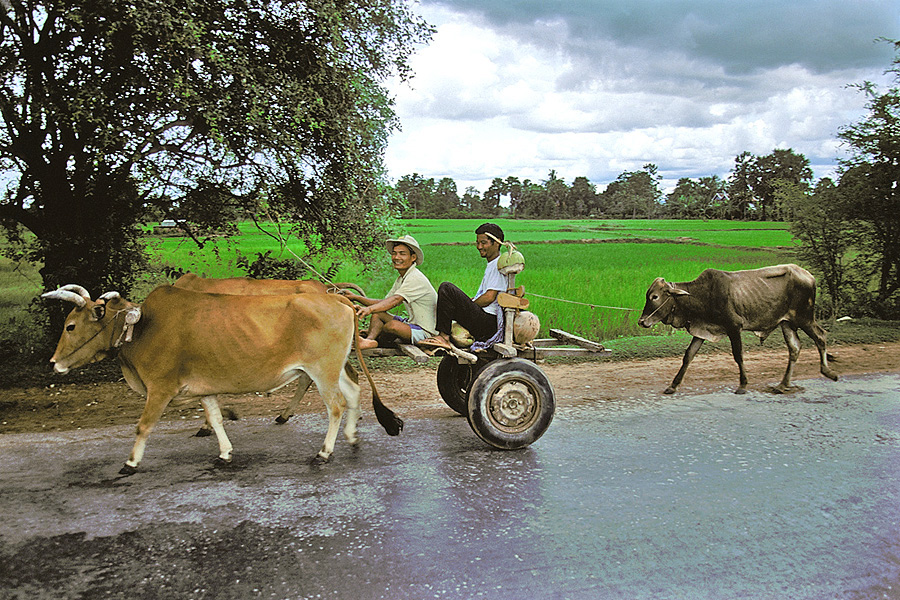 |
|
| Kampot Province, Cambodia |
|
|
|
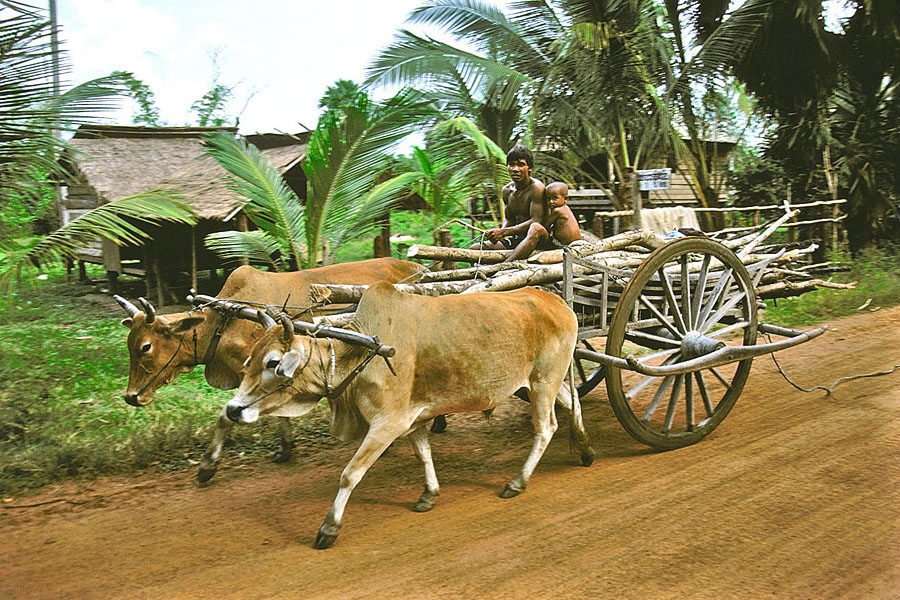 |
|
This young boy is quite uncertain
of the outsiders as his cart approaches -
Kampot Province, Cambodia |
|
|
|
 |
|
The youngster is quite frightened
of either the visitors or the camera -
Kampot Province, Cambodia |
|
|
|
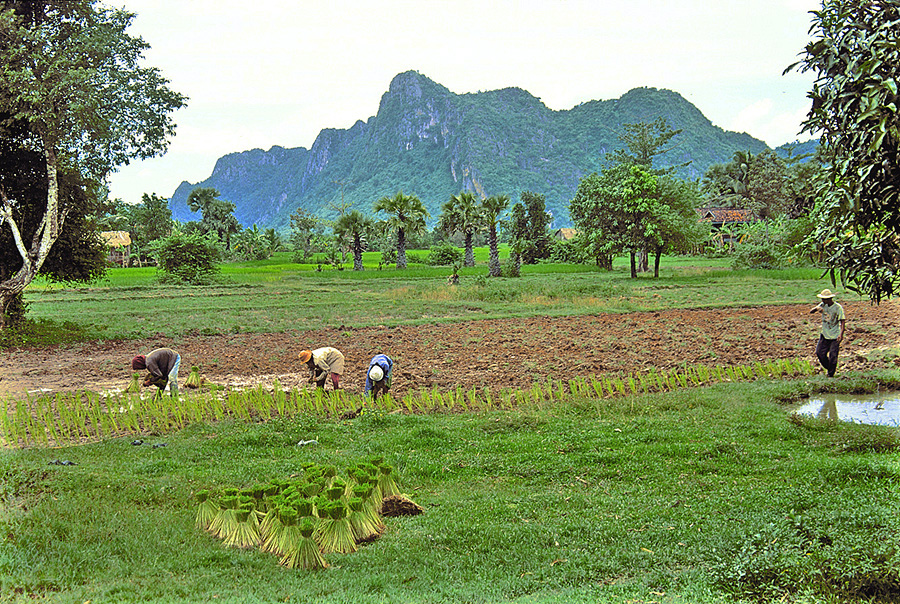 |
|
Somebody has to plant all of that
rice -
Kampot Province, Cambodia |
|
|
|
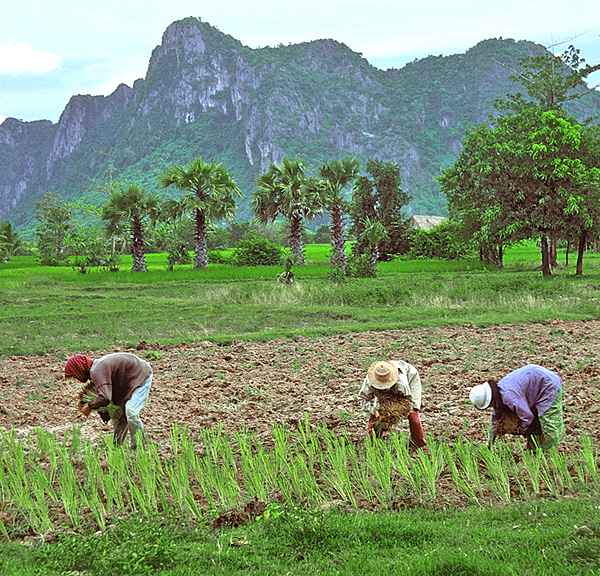 |
|
Working the rice fields can be
back-breaking and monotonous work -
Kampot Province, Cambodia |
|
|
|
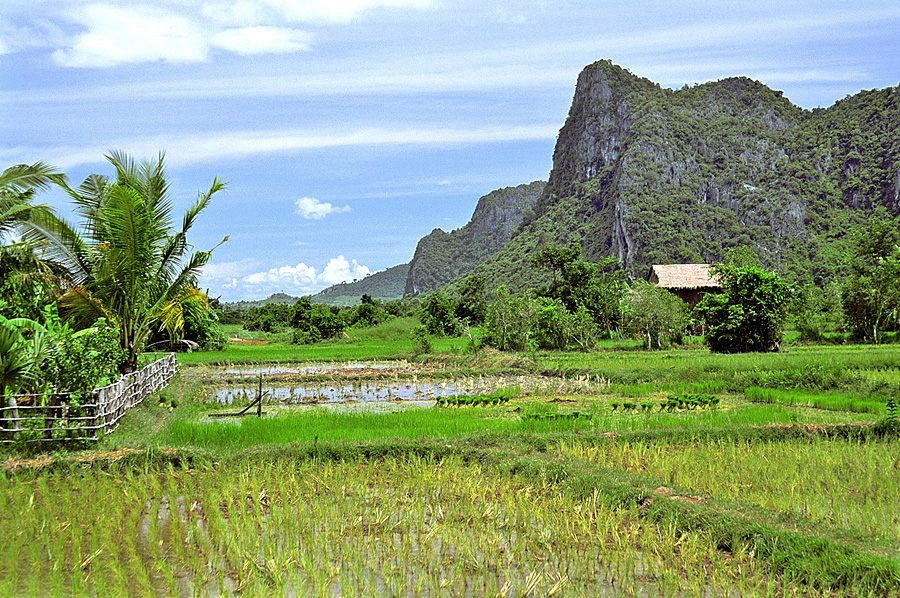 |
|
The rice paddies butt up against
the rugged Elephant Mountains -
Kampot Province, Cambodia |
|
|
|
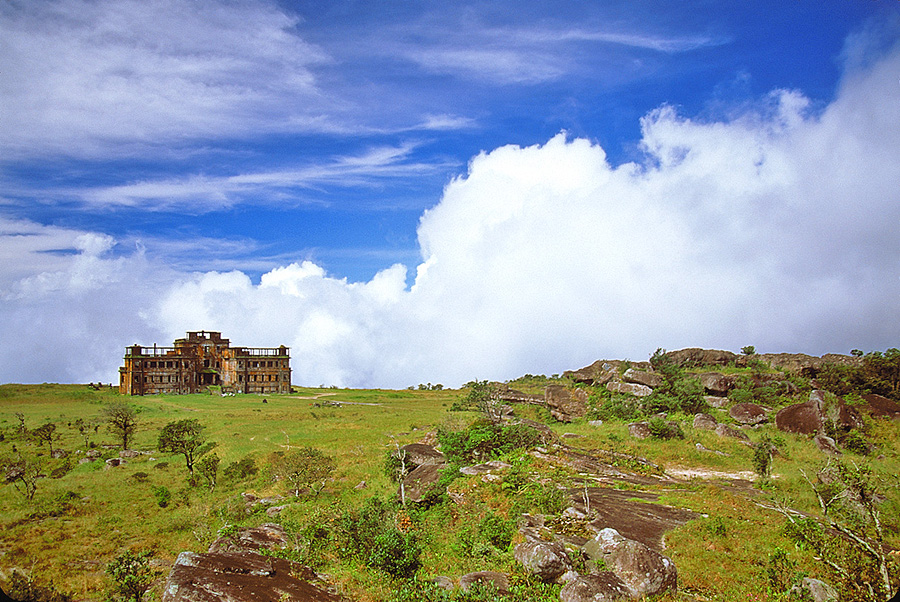 |
|
The French hill station of Bokor
was constructed by the French in 1922 on the southernmost peak (3,543
feet) of the Elephant Mountains;
the hill station was used by the French elite to escape the humidity and
chaos of the capital city during French occupation -
Bokor National Park, Cambodia |
|
|
|
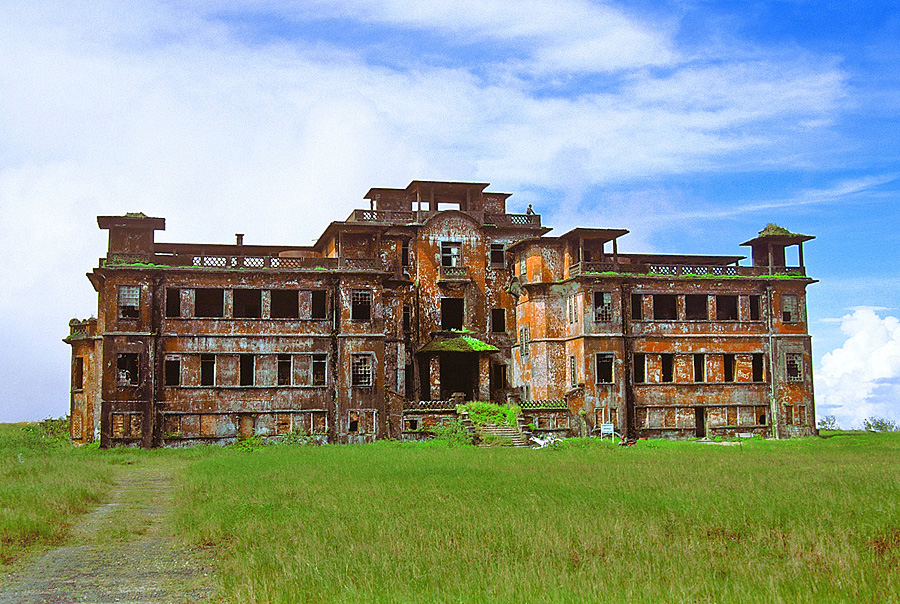 |
|
The eerie Bokor Palace Hotel and Casino
sits abandoned on the isolated mountaintop with windows only
partially covered by broken shards of glass.
The former hill station's many structures have been used over the years
for combat due to their strategic location. The hotel becomes
especially
haunting when the afternoon fog envelopes the vast, empty ballroom with its broken
tiles and bullet-riddled walls -
Bokor National Park, Cambodia |
|
|
|
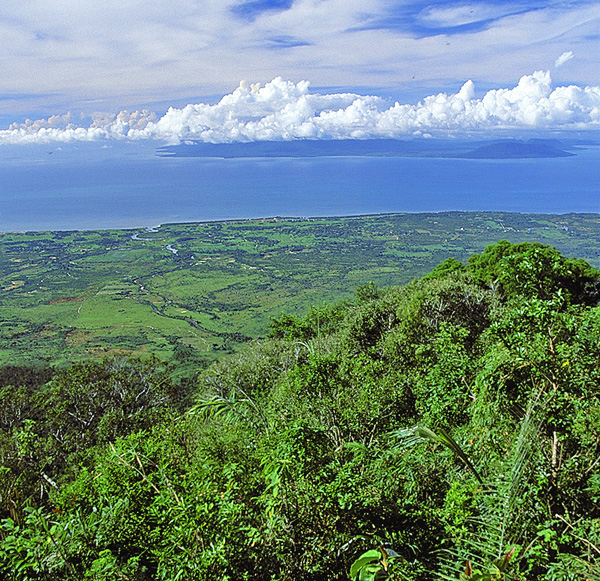 |
|
This is the view from the back
porch of the Bokor Palace Hotel; the vista from the 3,500-foot summit
includes the Cambodian coast, the Gulf of Thailand, and the offshore Vietnamese island of Phu Quoc -
Bokor National Park, Cambodia |
|
|
|
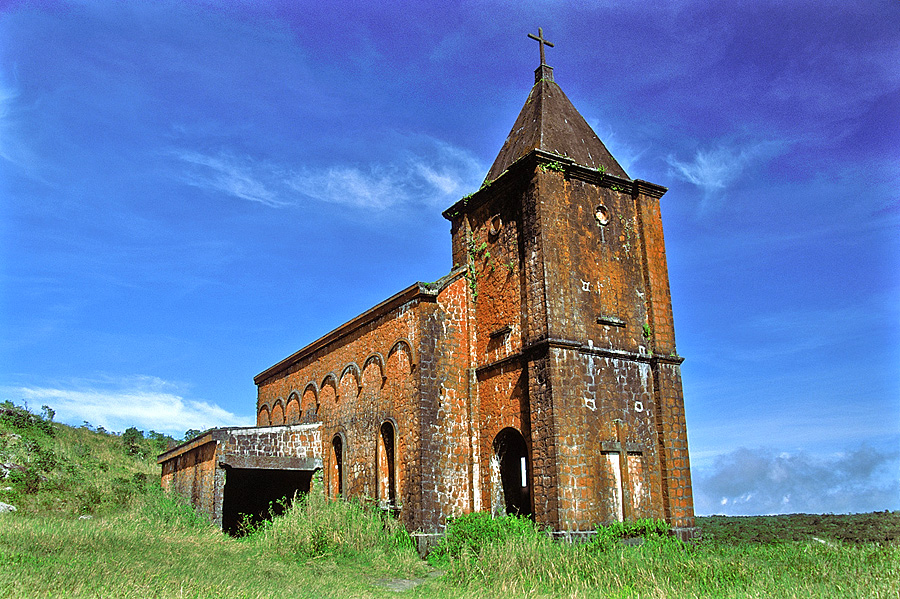 |
|
The hill station included not
only the Bokor Palace Hotel and Casino but also this Catholic church -
Bokor National Park, Cambodia |
|
|
|
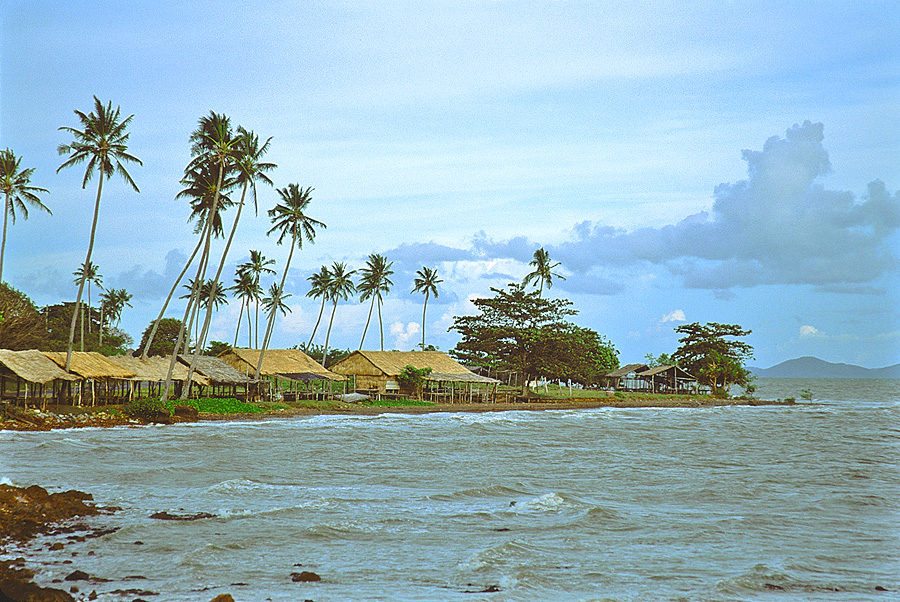 |
|
Southern
Cambodia's sleepy coast on the Gulf of Thailand -
Kep, Cambodia |
|
|
|
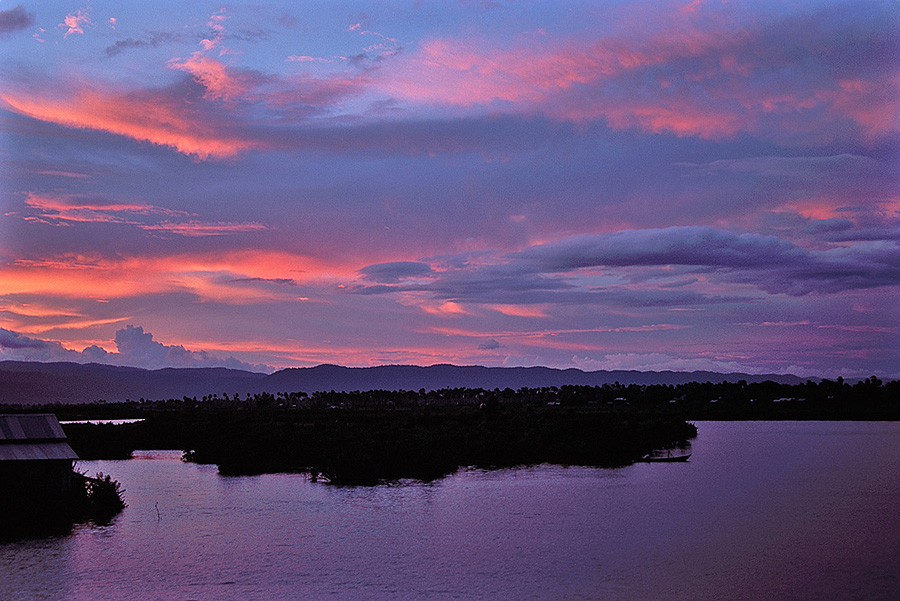 |
|
Sunset over Cambodia's Elephant
Mountains -
near Kampot, Cambodia |
|
|
|
|
|
|
|
|
Return to
Photo
Index
Return
to Clickable Map
Return to Home Page |
|
|
|
All images © Ron Miller
For authorized use of these photos, please contact Ron Miller at TheHappyCannibal@gmail.com |
|
|
|
|
|
|








































































